Sam Haskins
“All too frequently the amateur will purchase a fine modern camera and proceed to use it for making the most elementary simple snapshots. This surely is like playing ‘Chopsticks’ on a concert grand piano.”
Sam Haskins was born on November 11, 1926, in Kroonstad, South Africa (1926–2009). He studied drawing and painting at the Johannesburg Technical College before pursuing formal training in photography at the London School of Printing and Graphic Arts.
In the early 1950s, Haskins returned to South Africa and opened a commercial studio in Johannesburg, where he worked in advertising photography. His background in graphic design influenced his visual sensibility early on, particularly in his layout decisions and lighting control. His studio work during this time helped him refine many of the technical skills he would later apply to his fine art practice.
Haskins moved to London in the 1960s, where his career shifted toward book publishing and exhibition work. His first photobook, Five Girls (1962), marked the beginning of a career-long focus on the female figure.
Photographic Style and Techniques
Sam Haskins’ photographic style is defined by its strong graphic sensibility, narrative structure, and a deep commitment to analog processes. He preferred in-camera and physical techniques over post-production manipulation, working with a high degree of control both at the time of capture and in the darkroom. His approach merges fine art composition with fashion aesthetics, often within a single image or sequence.
Key characteristics of his style include:
• In-camera image making: Haskins used double exposures, montage, blur, and controlled lighting during the shoot itself. He minimized post-processing, instead relying on the technical precision of his studio setup and analog materials.
• Darkroom montage techniques: In his classic black-and-white work from the 1960s, particularly in Five Girls and Cowboy Kate, Haskins created montages entirely under the enlarger. These were built by exposing two negatives onto the same sheet of photographic paper, often using tracing paper or registration methods to carefully align elements.
• Color montage using the Pentax 67: Later in his career, Haskins used the removable pentaprism feature of the Pentax 67 to align transparencies directly on the ground glass. This method allowed him to physically position one image over another, then tape the transparencies together for a precisely composed final image.
• Hybrid image-transfer process: Haskins also developed a technique where a black-and-white print—dry-mounted onto card—would be rephotographed to create a transparency. These transparencies were used either in his slideshow presentations or for compositing with other images, blending tonal work from black-and-white with elements of color.
• Exaggerated grain and darkroom plasticity: His most recognizable visual signature was his use of grain as an expressive tool. This was achieved through a multi-step analog workflow: underexposing in-camera, pushing the film during development, replacing the standard enlarger bulb with a floodlight for broader tonal control, enlarging from a small portion of the negative (which increased apparent grain), and printing on high-contrast paper. The resulting images had a sculptural, almost tactile quality.
• Nude figure photography: Haskins frequently worked with the female form, emphasizing gesture, framing, and emotional tone. He often photographed non-professional models to capture a more natural, unguarded presence. His approach to the nude was both stylized and empathetic, rooted more in observation and design than provocation.
• Narrative photobooks: Haskins was an early innovator in creating image-based books that functioned as fictional or thematic narratives. Rather than serving as collections of standalone images, his books like Cowboy Kate and November Girl were structured with story arcs and visual rhythm.
• Minimalist studio lighting: He used chiaroscuro lighting techniques to enhance the three-dimensional qualities of the body while maintaining clarity and contrast. His setups were often simple but highly controlled, producing dramatic but clean results.
Haskins’ photographic sensibility was influenced by his background in drawing and painting. As a student, he practiced life drawing, and this training in tonal rendering carried over into his photographic prints. His grainy, high-contrast nudes can be seen as a continuation of this early work—a photographic extension of charcoal’s tactile and sensual language.
Career Highlights
Sam Haskins’ major publications are regarded as milestones in 20th-century photographic history. The following books played central roles in his career:
Five Girls (1962) A black-and-white nude study that emphasized design, cropping, and controlled lighting. It marked his transition from commercial to fine art photography.
Cowboy Kate & Other Stories (1964) A fictional visual narrative of a woman named Kate. The book featured bold use of grain and sequential storytelling. It received the Prix Nadar in France and sold nearly one million copies. It became a fashion and art icon of the 1960s.
November Girl (1967) A visual story featuring model Anulka Dziubinska. The book uses tone, gesture, and location to depict emotional isolation and romantic longing.
African Image (1967) A documentary-style project capturing traditional life, crafts, and landscapes across sub-Saharan Africa. While visually different from his studio work, it still reflected his graphic approach to photography.
Haskins Posters (1972) A large-format color book designed with removable prints. It bridged the gap between photography and graphic design and received two Golden Pencil awards from the New York One Show.
Photo Graphics (1980) An exploration of photographic surrealism created entirely with analog tools. The book emphasized the blend of graphic design principles with photographic content.
Fashion Etcetera (2009) A late-career retrospective focused on fashion-related imagery from his archive, combining unpublished and classic works.
Photography Gear
Haskins’ technical choices supported his stylistic priorities: precision, control over tone, and high image quality for print reproduction.
Pentax 6x7
• Medium format camera known for its 6x7 negative size, offering excellent detail and tonal depth.
• Haskins used this camera extensively for studio and portrait work.
• His collaboration with Pentax included shooting and art-directing over 15 calendars for the brand between 1970 and 2000.
35mm Cameras
• Haskins occasionally used 35mm film cameras for increased flexibility.
• These were typically employed in faster-paced or more spontaneous environments, including documentary settings like African Image.
Studio Lighting
• He preferred soft, sculptural light, often using a minimal number of lights in controlled environments.
• His lighting setups supported his focus on form and allowed for consistent visual tone across sequences.
Haskins’ technical method was rooted in analog craftsmanship, with a deliberate avoidance of post-production alterations. His effects were achieved during the shoot or through darkroom techniques rather than retouching.
Quotes
“All too frequently the amateur will purchase a fine modern camera and proceed to use it for making the most elementary simple snapshots. This surely is like playing ‘Chopsticks’ on a concert grand piano.”
“What some highbrows call rapport is nothing more than a mild flirtation between photographer and the girl on the other side of the camera. Some models get so professional they can spend hours flirting with the camera itself while the poor photographer is reduced to the role of spectator.”
“A photographer went to a socialite party in New York. As he entered the front door, the host said ‘I love your pictures—they’re wonderful; you must have a fantastic camera.’ He said nothing until dinner was finished, then: ‘That was a wonderful dinner; you must have a terrific stove.’”
Legacy and Influence
Sam Haskins’ work contributed significantly to changing the visual language of fashion and figure photography. His books remain widely collected, studied, and referenced in both photographic and design contexts.
His impact can be observed in contemporary fashion photography and editorial layouts that borrow from his in-camera experimentation and narrative sequencing. Haskins’ ability to mix sensuality with formalism has kept his work relevant well into the digital age.
His approach shares key similarities with Jeanloup Sieff, particularly in the use of graphic composition, minimalist lighting, and the photographic study of the human figure in fashion settings.
Haskins’ photobooks, especially Cowboy Kate & Other Stories, are considered landmarks in the history of photography. He is credited with helping to redefine both the photobook format and the presentation of the nude as a subject of artistic and narrative interest.
His archive is now managed by the Haskins Estate and his son Ludwig Haskins, and his work continues to appear in exhibitions and retrospectives internationally.
Alec Soth
"I believe in the basic notion that the world is infinitely interesting."
Alec Soth (website), born in 1969, is an American documentary photographer renowned for his poetic and intimate visual storytelling. His work often explores the American experience, capturing the beauty and melancholy of overlooked places and people. Let’s talk about the life and career of Alec Soth, examining his photographic style, techniques, and the legacy he continues to build.
Early Life and Career
Alec Soth grew up in Minnesota and developed a passion for photography from an early age. He studied at Sarah Lawrence College in New York, where he honed his skills and began to develop his unique visual voice. After graduating, Soth returned to Minnesota and started working on various photographic projects that would later shape his career.
In 2004, Soth gained international recognition with his series "Sleeping by the Mississippi," which showcased his talent for capturing the spirit of the American landscape and its inhabitants. His work has been featured in numerous exhibitions and publications since then, including the prestigious Magnum Photos agency, of which he became a nominee in 2004 and a full member in 2008.
Photographic Style and Techniques
Alec Soth's photography is characterized by its quiet intimacy and attention to detail. He often focuses on the mundane and the overlooked, revealing the beauty and humanity in his subjects. His images evoke a sense of nostalgia and melancholy, capturing the essence of the American experience. In terms of composition, Soth favors a straightforward, almost minimalist approach that allows the viewer to fully engage with the subject matter.
Throughout his career, Soth has used a large-format 8x10 view camera to produce high-quality, detailed images. This choice of equipment, combined with his keen eye for composition and narrative, has led to a distinctive visual style that sets his work apart.
Career Highlights
Some of Alec Soth's most notable projects include:
"Sleeping by the Mississippi" (2004): This series brought Soth widespread acclaim and features a collection of photographs taken along the Mississippi River, showcasing the lives of its residents and the landscapes they inhabit.
"Niagara" (2006): In this project, Soth explored the town of Niagara Falls and its surrounding areas, capturing the tension between the romantic ideal of the falls and the often harsh reality of life in the region.
"Broken Manual" (2010): This body of work focuses on individuals who have chosen to live off the grid and examines the desire for solitude and escape from modern society.
"Songbook" (2015): Inspired by the tradition of the American songbook, Soth traveled across the United States to create a visual record of the country's contemporary social landscape.
Photography Gear
Alec Soth is known for using a large-format 8x10 view camera, which allows him to capture highly detailed images with a remarkable depth of field. This type of camera is ideal for his style of documentary photography, as it enables him to create visually stunning images that draw the viewer into the scene. The use of large-format film also results in a slower, more deliberate approach to photography, which aligns with Soth's focus on intimate storytelling and attention to detail.
Photography Books
"Sleeping by the Mississippi" is a defining publication in the photobook era by Alec Soth. Evolving from a series of road trips along the Mississippi River, this book captures America's iconic yet oft-neglected 'third coast' through a richly descriptive mix of individuals, landscapes, and interiors. For practicing photographers, the book offers insights into Soth's unique approach to documentary-style photography with poetic sensibility, capturing a consistent mood of loneliness, longing, and reverie.
"Songbook" sees Alec Soth shifting his focus towards community life in America. Assuming the role of a community newspaper journalist, Soth traveled from state to state between 2012 and 2014, attending various meetings, dances, festivals, and gatherings. Stripping the images of their news context, Songbook highlights the root desire for human connection and portrays a lyrical representation of the tension between American individualism and the desire to unite, providing inspiration and insight for photographers exploring themes of community and connection.
"A Pound of Pictures" is a celebration of the photographic medium, featuring an entirely new collection of work by Alec Soth made between 2018 and 2021. Depicting a vast array of subjects, this book reflects on the photographic desire to capture and crystallize experience, as well as the significance of printed images in representing and recollecting those experiences. This book offers practicing photographers a look into Soth's thought process and the connection between the ephemeral and the physical in photography.
"Gathered Leaves Annotated" brings together five of Alec Soth's major books in a single, compact, and densely detailed volume. Reproducing every spread from these books with detailed annotations, this unique publication offers an updated roadmap through Soth's oeuvre, providing insights into his creative process and reinforcing his position as a master of the book form. This compilation serves as an invaluable resource for photographers looking to explore Soth's diverse body of work and learn from his artistic journey.
Quotes
"I believe in the basic notion that the world is infinitely interesting."
"Photography is a very lonely medium. There's a kind of beautiful loneliness in voyeurism."
"I think of my work as being about the relationship between the landscape and the people who inhabit it."
"I'm not trying to make statements about America. I'm trying to find questions about it."
"For me, photography is about storytelling. I'm interested in the poetic and the narrative."
Legacy and Influence
Alec Soth's photography has had a significant impact on the world of documentary photography, particularly for those interested in exploring the American experience. His work has resonated with photographers like Bieke Depoorter, who also seeks to capture the essence of everyday life and the human experience through her images.
In a different context, another photographer who shares a similar sensibility to Soth is Christopher Anderson, known for his intimate and empathetic approach to documenting the lives of his subjects. Both photographers excel at creating a sense of connection between the viewer and the people they photograph, highlighting the beauty in the mundane.
Alec Soth's work has been widely exhibited and collected by institutions such as the San Francisco Museum of Modern Art, the Museum of Fine Arts in Houston, and the Walker Art Center in Minneapolis. His influence is felt not only in the world of photography but also in the broader art world, where his ability to tell compelling stories through images has garnered widespread admiration.
In conclusion, Alec Soth's intimate and evocative approach to documentary photography has left a lasting mark on the field, inspiring both established and emerging photographers to find beauty and meaning in the ordinary. His work serves as a reminder of the power of photography to tell stories, explore the human experience, and create connections between people and places.
Arnold Newman
"We don't take pictures with our cameras. We take them with our hearts and we take them with our minds."
Arnold Newman (1918-2006) was an American photographer known for his pioneering work in environmental portraiture. He skillfully combined the subject's personality and environment to create powerful and memorable portraits. His unique approach to portraiture forever changed the field and left a lasting impact on future generations of photographers.
Early Life and Career
Born in New York City in 1918, Arnold Newman grew up in Atlantic City, New Jersey, and later moved to Miami Beach, Florida. He initially studied painting at the University of Miami, but his artistic pursuits were interrupted by World War II. During the war, Newman worked in a photo studio specializing in passport and ID photographs. It was here that he began to develop his interest in photography.
After the war, Newman returned to New York City and started his career as a professional photographer. His breakthrough came in 1946 with a series of portraits of prominent artists and writers, including Piet Mondrian and Max Ernst. These photographs gained attention for their unique compositions, and Newman quickly became a sought-after portrait photographer.
Photographic Style and Techniques
Newman's approach to portraiture, known as environmental portraiture, involved placing his subjects within their surroundings to provide insight into their personalities and professions. By incorporating elements of their work or personal spaces, Newman captured the essence of the individual in a way that traditional studio portraits could not.
Newman's compositions were often characterized by strong geometric patterns, bold contrasts, and a focus on the relationship between the subject and their environment. His ability to find the perfect balance between the person and their surroundings resulted in portraits that were both visually striking and deeply revealing.
Career Highlights
Throughout his career, Arnold Newman photographed a wide range of influential figures, including politicians, artists, musicians, and scientists. Some of his most famous portraits include those of Igor Stravinsky, Pablo Picasso, John F. Kennedy, and Marilyn Monroe.
Newman's work has been widely exhibited and published, and his photographs are held in the collections of prestigious institutions such as the Museum of Modern Art in New York and the National Portrait Gallery in Washington, D.C.
Photography Gear
Arnold Newman was known to use a variety of cameras and lenses throughout his career, often choosing the equipment based on the needs of a specific project. He frequently used medium format cameras, such as the Rolleiflex and the Hasselblad, which allowed for greater detail and higher image quality. He also favored prime lenses,and clarity in his images.
Newman was also known to use a range of lighting techniques to create the desired mood and atmosphere in his portraits. His skillful use of natural light, as well as studio lighting setups, helped him achieve a balance between the subject and their environment.
Photography Books
"Arnold Newman: At Work (Harry Ransom Center Photography Series)" provides an unprecedented, firsthand insight into the evolution of Arnold Newman's creativity. The book showcases not only his signature images but also contact sheets, Polaroids, and work prints with handwritten notes, illustrating the process behind his iconic photographs. Featuring adsheets and magazine covers from various publications, the book highlights the range of Newman's largely unknown editorial work and offers valuable resources for practicing photographers.
"Arnold Newman" focuses on the photographer's classic environmental portraiture, featuring subjects like Piet Mondrian, Igor Stravinsky, and Max Ernst. Despite a challenging start to his career during the Great Depression, Newman managed to establish himself in the New York art scene of the early 1940s. With his unmistakable style, he became the star photographer of artists, writers, and musicians, providing inspiration and techniques for portrait photographers.
"Masterclass: Arnold Newman" celebrates Newman's achievements and is the first monograph published after his death. Containing over 200 images, many never before seen in book form, the collection includes individual and group portraits, landscapes, architectural details, and cityscapes. Accompanying a touring show that opened in Berlin in 2012, the book features quotes from interviews with Newman, short biographies of his sitters, and essays on this deeply principled perfectionist. Showcasing his talent through a wide range of subjects, this book serves as an homage to a true master of modern photography.
Quotes
"A lot of photographers think that if they buy a better camera they'll be able to take better photographs. A better camera won't do a thing for you if you don't have anything in your head or in your heart."
"We don't take pictures with our cameras. We take them with our hearts and we take them with our minds."
"There are no rules and regulations for perfect composition. If there were, we would be able to put all the information into a computer and would come out with a masterpiece."
"The camera is a remarkable instrument. Saturate yourself with your subject, and the camera will all but take you by the hand and point the way."
"Photography, as we all know, is not real at all. It is an illusion of reality with which we create our own private world."
Legacy and Influence
Arnold Newman's innovative approach to portraiture has left a lasting impact on the world of photography. His environmental portraits have influenced generations of photographers, including Annie Leibovitz, Richard Avedon, or Irving Penn, who have similarly explored the relationship between the subject and their environment in their work.
Newman's ability to capture the essence of his subjects and create visually striking compositions has inspired countless photographers to push the boundaries of traditional portraiture.
Arnold Newman's unique approach to environmental portraiture has shaped the field and left an indelible mark on the world of photography. His striking compositions and insightful portrayals of his subjects will continue to inspire future generations of photographers.
Christopher Anderson
"The camera is just a tool; the real magic happens when the photographer can find the humanity in their subjects."
Christopher Anderson (website) is a renowned documentary photographer, best known for his intimate and emotive visual storytelling. A member of the prestigious Magnum Photos agency since 2005, Anderson's work spans photojournalism, portraiture, and fine art photography, and has been featured in numerous publications and exhibitions worldwide. His distinctive style and approach to documentary photography continue to inspire and influence generations of photographers.
Early Life and Career
Born in 1970 in Canada, Christopher Anderson grew up in Texas and later attended the University of Texas at Austin, where he studied journalism. He began his career as a freelance photographer, covering news events and human interest stories around the world. Anderson first gained recognition for his poignant coverage of the 1999 conflict in Kosovo, followed by his powerful images of the 2000 sinking of the Kursk submarine in Russia.
Anderson's breakthrough project, "Son," documented the birth and early life of his son, offering an intimate look at fatherhood and family life. This deeply personal work garnered widespread acclaim and led to the publication of his first monograph in 2003.
Photographic Style and Techniques
Christopher Anderson's photography is characterized by its emotional depth, empathy, and humanity. His images often focus on the personal and emotional aspects of his subjects, revealing their vulnerability and inner strength. Anderson's ability to capture the essence of a person or situation is what sets him apart from many of his contemporaries.
Anderson's approach to documentary photography is immersive, often spending significant amounts of time with his subjects to build trust and gain a deeper understanding of their lives. His use of natural light and shadow, along with his keen eye for composition, further enhances the emotional impact of his images.
Career Highlights
Throughout his career, Christopher Anderson has been recognized with numerous awards and honors, including the 2001 Robert Capa Gold Medal for his work in Afghanistan and the 2007 World Press Photo award for his series on the Israeli-Hezbollah conflict.
Some notable projects by Anderson include:
"Capitolio" (2009), a visual exploration of Venezuela under Hugo Chávez's rule
"Stump" (2014), a series of portraits of American politicians during the 2012 presidential campaign
"Approximate Joy" (2018), a collection of intimate portraits that reflect on the human condition
Photography Gear
Christopher Anderson is known to prefer compact, unobtrusive cameras that allow him to work closely with his subjects. Some of his preferred gear includes:
Leica M-Series cameras, valued for their compact size and outstanding image quality
A variety of prime lenses, such as the Leica Summicron 35mm, which offer a natural perspective and excellent low-light performance
Photography Books
"Christopher Anderson: Capitolio" is a cinematic journey through the upheavals of contemporary Caracas, Venezuela. This book presents a poetic and politicized vision of a city and country ripping apart at the seams under popular unrest. Anderson captures the chaotic intermingling of violence and sensuality in a largely unreported environment, providing a unique perspective on a tumultuous situation.
In "Christopher Anderson: Stump", Anderson showcases his influential political photography with rare behind-the-scenes access to the inner workings of American political theater. This collection features color and black-and-white photographs from recent campaign trails, scrutinizing the rhetorical masks of politicians and audience members alike. The images, when removed from the context of reportage, accumulate a mesmerizing quality that is both frightening and hilarious.
"Christopher Anderson: Bleu Blanc Rouge" presents Anderson's playful series of color photographs taken throughout the United States, France, Italy, Spain, and Germany. This magazine-like style book encourages readers to locate recurring visual elements, showcasing Anderson's skill in capturing portraits, candid moments, and still lifes.
"Marion" marks the closing chapter of a trilogy of books by Christopher Anderson, chronicling his life and love with his wife Marion. These deeply personal photographs began as a natural action to capture and preserve fleeting moments in their relationship. The images, seen as expressions of love, have become Anderson's life's work, and offer intimate insights into the passing of time and the depth of their partnership.
"PIA" can be considered the spiritual sequel to Anderson's earlier book, SON. Set against the backdrop of the family's return to Paris, this book features Anderson's daughter, Pia, as the protagonist and muse. The images depict a father-daughter relationship as well as a photographer-subject collaboration, with Pia taking control of her character. The passage of time in these photographs is accompanied by a sense of melancholy and a declaration of hope.
Quotes
“It is not about cameras; it's about how you use them to create something meaningful."
"For me, the power of photography lies in its ability to make us feel and connect with others."
"The camera is just a tool; the real magic happens when the photographer can find the humanity in their subjects."
"Photography should be about finding the extraordinary within the ordinary."
"I believe in the power of images to reveal truths and evoke emotions that can lead to understanding and empathy."
Legacy and Influence
Christopher Anderson's impact on the world of documentary photography is immense. His empathetic and intimate approach to storytelling has resonated with photographers and viewers alike, inspiring many to explore the emotional depths of their subjects. Anderson's work has drawn comparisons to other renowned photographers, such as Diane Arbus, Robert Frank, and Mary Ellen Mark, who also sought to unveil the humanity and vulnerability of their subjects.
Through his captivating images, Christopher Anderson has broadened the scope of documentary photography, challenging the traditional boundaries between photojournalism, portraiture, and fine art. His unique perspective and ability to connect with his subjects will continue to inspire future generations of photographers, leaving an indelible mark on the world of photography.
Philippe Halsman
"If you want to see what someone is truly like, ask them to jump."
Philippe Halsman (1906-1979) was an innovative and highly influential portrait photographer, known for his ability to capture the true essence of his subjects. In a career that spanned over four decades, Halsman worked with some of the most iconic figures of his time, including Salvador Dalí, Marilyn Monroe, and Winston Churchill. His inventive techniques and unique approach to portrait photography have left a lasting impact on the field.
Early Life and Career
Born in Riga, Latvia, in 1906, Philippe Halsman showed an early interest in photography. He moved to Paris in 1928, where he began his professional career as a portrait photographer. Over the next decade, Halsman honed his skills and developed a reputation for his unique style and creative approach.
In 1940, Halsman fled to the United States to escape World War II, eventually settling in New York City. It was here that he established his studio and began collaborating with prominent artists and celebrities, including Salvador Dalí. Together, they produced some of Halsman's most memorable and enduring images, such as "Dalí Atomicus."
Photographic Style and Techniques
Philippe Halsman's photographic style is characterized by his ability to reveal the inner lives of his subjects, often through unconventional methods. His portraits are deeply psychological, capturing not just the physical appearance of his subjects but their essence as well.
Halsman was a pioneer of "jumpology," a technique in which he asked his subjects to jump while being photographed. This method allowed Halsman to capture a sense of spontaneity and reveal a different side of his subjects that might not have been apparent in more traditional poses.
Other notable portrait photographers with similar styles are Annie Leibovitz and Yousuf Karsh.
Career Highlights
Over the course of his career, Philippe Halsman photographed a wide range of notable figures, including Salvador Dalí, Marilyn Monroe, Audrey Hepburn, and Winston Churchill.
Halsman's work was featured on the cover of LIFE magazine a record 101 times.
In 1951, Halsman was awarded the first of his two Guggenheim Fellowships, allowing him to explore the art and science of photography further.
Halsman's collaboration with Salvador Dalí, particularly the iconic "Dalí Atomicus," remains one of the most enduring and influential images in the history of photography.
Photography Gear
Throughout his career, Philippe Halsman used a variety of photography gear, including:
Twin-lens reflex (TLR) cameras: Known for their excellent image quality, TLR cameras were a popular choice among portrait photographers of Halsman's era. Brands like Rolleiflex and Mamiya were among the top choices for professionals.
Large format cameras: For studio work, Halsman often used large format cameras, which provided superior image quality and detail. Brands such as Linhof and Graflex were popular choices for professional photographers.
Various lenses: Halsman used a range of lenses, including wide-angle, normal, and telephoto, depending on the desired effect and composition of the portrait.
Studio lighting: In order to create the perfect lighting conditions, Halsman relied on a variety of studio lights, reflectors, and diffusers.
Photography Books
"Philippe Halsman: A Photographer's Life" by Henry Leutwyler offers a unique photo-biography of renowned Life magazine photographer Philippe Halsman, who had a total of 101 Life covers to his name. Leutwyler, a New York-based photographer, documents Halsman's professional and private life by photographing his possessions, revealing the personality behind the iconic images.
"Philippe Halsman's Jump Book" captures illustrious sitters as they jump while being photographed, with Halsman reflecting on both the jumpers and non-jumpers. This book provides insights into Halsman's creative process and the unique concept of "jumpology."
"Philippe Halsman: Astonish Me!" is a massive retrospective volume that profiles Philippe Halsman's work, including his early career, experiments with portraiture, his series of stunning images of Marilyn Monroe, over 100 covers for Life magazine, and his 30-year collaboration with Salvador Dali.
"Halsman Postcard Box" contains 25 imaginative and iconic 4 1/4 x 6 in. postcards featuring the renowned portrait photographer Philippe Halsman's work, presented in an imprinted box.
"Dali's Mustache" is a cult classic and collector's item resulting from the artistic collaboration between surrealist Salvador Dalí and Philippe Halsman. Subtitled "A Photographic Interview," the book pairs short questions presented to Dalí with corresponding black-and-white photographs by Halsman, showcasing their shared absurd and hilarious creativity.
Quotes
"Every face I see seems to hide and sometimes, fleetingly, to reveal the mystery of another human being...Capturing this revelation became the goal and passion of my life."
"A true portrait should, today and a hundred years from today, be the testimony of how this person looked and what kind of human being he or she was."
"I never wanted to be a theoretician, but a good craftsman who knew his job."
"If you want to see what someone is truly like, ask them to jump."
"The immortal photographers will be straightforward photographers, those who do not rely on tricks or special techniques."
Legacy and Influence
Philippe Halsman's unique approach to portrait photography, combined with his innovative techniques and ability to reveal the essence of his subjects, has left a lasting impact on the field. His work continues to inspire generations of photographers, and his images remain some of the most iconic and memorable in the history of photography.
Other notable portrait photographers worth checking out are Richard Avedon, Diane Arbus, and Irving Penn.
Halsman's influence can be seen not only in the work of these photographers but also in contemporary portrait photography as a whole. His innovative techniques, like jumpology, have been adopted and adapted by photographers worldwide, as they continue to seek new ways to capture the essence of their subjects.
In conclusion, Philippe Halsman's enduring legacy lies in his ability to reveal the inner lives of his subjects and to create iconic and memorable images. As an innovator and a master of his craft, Halsman has left an indelible mark on the world of photography, influencing countless photographers and shaping the field for generations to come.
Steve McCurry
"If you wait, people will forget your camera and the soul will drift up into view."
Steve McCurry is a renowned American photojournalist and photographer, best known for his evocative color photography and his ability to capture the essence of the human experience. With a career spanning over four decades, McCurry has documented numerous conflicts, natural disasters, and ancient cultures across the globe. His iconic image of the "Afghan Girl" has become one of the most recognizable and celebrated photographs in the history of photography.
Early Life and Career
Born in Philadelphia in 1950, Steve McCurry developed an interest in photography at a young age. He studied filmmaking and photography at Pennsylvania State University, graduating in 1974. After working as a newspaper photographer for a few years, McCurry embarked on a solo trip to India, where he began documenting the people and cultures he encountered. This trip marked the beginning of his remarkable career as a photojournalist.
In 1979, McCurry gained international recognition when he managed to smuggle images out of Afghanistan, just before the Soviet invasion. His photographs were among the first to reveal the conflict to the world, earning him the Robert Capa Gold Medal for Best Photographic Reporting from Abroad. This early success propelled McCurry into a long and distinguished career as a photojournalist, working with publications such as National Geographic, Time, and The New York Times.
Photographic Style and Techniques
Steve McCurry is known for his distinctive use of color and composition, which give his images a striking, almost painterly quality. Drawing inspiration from photographers like Henri Cartier-Bresson and Raghu Rai, McCurry captures the decisive moment, where all elements within the frame come together to convey a powerful narrative. His ability to connect with his subjects on a personal level allows him to create intimate and evocative portraits that reveal the human experience in its rawest form.
Throughout his career, McCurry has predominantly used Kodachrome film, which lends his images their signature saturated colors and exceptional clarity. However, as film has become increasingly rare, McCurry has transitioned to digital photography while maintaining the same visual language that defines his work.
Career Highlights
Steve McCurry's prolific career has produced numerous iconic images and garnered countless awards. Some of his most notable achievements include:
The "Afghan Girl" (1984): Arguably McCurry's most famous image, this captivating portrait of a young refugee with piercing green eyes graced the cover of National Geographic and has since become a symbol of the resilience of the Afghan people.
Coverage of the Iran-Iraq War (1980-1988): McCurry's harrowing images of the conflict brought the human cost of the war to the forefront, providing a stark contrast to the sanitized, distant coverage often seen in the media.
Documenting the monsoon season in India (1983-1984): McCurry spent months traveling across India to capture the impact of the monsoon season on people's lives, resulting in a powerful series of images that showcase the beauty and devastation of this natural phenomenon.
Photography Gear
Throughout his career, Steve McCurry has primarily used Nikon cameras and lenses. Steve's go-to camera at present is the Leica SL-2, which he primarily pairs with a versatile 24-90mm f/2.8-4 lens. Additionally, he frequently utilizes the 15-35mm f/3.5-4.5 and 90-280mm f/2.8-4 lenses. According to Steve, the Leica SL-2 is the finest camera he has ever worked with.
Photography Books
"Steve McCurry: A Life in Pictures" is a comprehensive retrospective of McCurry's 40-year career, featuring iconic images alongside 100 never-before-seen photographs. This book showcases the breadth and depth of his work, offering valuable insights into his unique style and approach to photography, as well as inspiration for photographers seeking to capture the world in a powerful and emotive way.
"Steve McCurry: The Iconic Photographs" is a collection of McCurry's most famous and enduring images, including his renowned "Afghan Girl" portrait. This book highlights his exceptional ability to capture intimate moments and powerful emotions, serving as a source of inspiration for photographers looking to develop their own ability to tell compelling stories through their images.
"In Search of Elsewhere: Unseen Images" presents a curated selection of previously unpublished photographs by McCurry, offering a fresh perspective on his body of work. This book highlights his keen eye for beauty and the human spirit, providing inspiration for photographers to seek out new stories and subjects in their own work.
"Stories and Dreams: Portraits of Childhood" focuses on McCurry's images of children from around the world, capturing the innocence, wonder, and resilience of youth. This collection offers valuable insights into his ability to connect with his subjects and create emotionally resonant images, inspiring photographers to explore the power of capturing the human experience.
"Untold: The Stories Behind the Photographs" delves into the fascinating stories behind some of McCurry's most iconic images, offering a unique glimpse into his creative process and photographic journey. This book provides valuable insights into his techniques and approach, encouraging photographers to develop their own storytelling abilities and deepen their understanding of the world around them.
"Steve McCurry: Devotion" explores the theme of faith and spirituality in McCurry's work, showcasing his incredible talent for capturing moments of reverence and contemplation across cultures. This collection serves as a source of inspiration for photographers seeking to explore themes of faith and spirituality in their own work, offering insights into McCurry's ability to find beauty and meaning in the everyday.
Quotes
"The photograph is an undeniably powerful medium. Free from the constraints of language, and harnessing the unique qualities of a single moment frozen in time, it has the ability to communicate with a global audience."
"If you wait, people will forget your camera and the soul will drift up into view."
"I look for the unguarded moment, the essential soul peeking out, experience etched on a person's face."
"Most of my photos are grounded in people, I look for the unguarded moment, the essential soul peeking out, experience etched on a person's face."
"My life is shaped by the urgent need to wander and observe, and my camera is my passport."
Legacy and Influence
Steve McCurry's work has had a significant impact on the field of photojournalism and photography as a whole. His ability to capture the human experience through his lens has inspired countless photographers to explore the world with a deeper sense of empathy and curiosity. Notable photographers influenced by McCurry's work include Annie Griffiths, Ami Vitale, and Lynsey Addario.
In addition to his artistic contributions, McCurry has also used his platform to advocate for social and environmental causes. His images have raised awareness of important issues, such as the plight of refugees and the effects of climate change, inspiring viewers to take action and make a positive difference in the world.
As an influential figure in the world of photography, Steve McCurry's work will continue to resonate with audiences for generations to come, reminding us of the power of the image to connect, inspire, and inform.
Diane Arbus
"A photograph is a secret about a secret. The more it tells you, the less you know."
Diane Arbus was an American photographer known for her striking and often controversial black-and-white portraits of people living on the margins of society. Her work challenged conventional notions of beauty and normalcy, offering a unique perspective on the human experience. By capturing subjects that were frequently overlooked or stigmatized, Arbus created a powerful visual narrative that continues to captivate and provoke audiences today.
Early Life and Career
Born in New York City in 1923, Diane Arbus grew up in a wealthy family that owned a successful department store. She married Allan Arbus at the age of 18, and together they pursued careers in fashion photography, collaborating on projects for magazines such as Vogue and Harper's Bazaar.
However, Arbus eventually became disillusioned with the world of fashion photography and sought to create images that were more personal and emotionally resonant. In the late 1950s, she began to study photography under the guidance of influential photographers such as Lisette Model and Alexey Brodovitch. These experiences helped shape her unique photographic style and cemented her desire to focus on documentary and portrait photography.
Photographic Style and Techniques
Diane Arbus's photographic style was characterized by its raw, unflinching portrayal of subjects and its exploration of identity, personal struggles, and the complexities of human existence. Some key aspects of her style and techniques include:
Direct Connection with Subjects: Arbus often spent considerable time getting to know her subjects, fostering a sense of trust and intimacy that allowed her to capture their true essence in her images.
Square Format: Arbus frequently used a square-format Rolleiflex camera, which lent her images a distinctive and recognizable aesthetic.
Straightforward Composition: Arbus's images were often composed with her subjects placed centrally in the frame, which served to emphasize their presence and confront the viewer directly.
Natural Light: Arbus typically worked with natural light, allowing her subjects' environments to inform the mood and atmosphere of her images.
Career Highlights
Some notable highlights of Diane Arbus's career include:
Her groundbreaking 1967 exhibition, "New Documents," at the Museum of Modern Art in New York, which she shared with photographers Garry Winogrand and Lee Friedlander. This exhibition introduced her work to a wider audience and established her as a significant voice in the world of photography.
Receiving a Guggenheim Fellowship in 1963 and 1966, which provided financial support for her ongoing exploration of marginalized communities.
Posthumous retrospectives of her work, such as the 1972 exhibition at the Museum of Modern Art, which solidified her status as an influential figure in the history of photography.
Photography Gear
Diane Arbus used various photography gear throughout her career, including:
Cameras: Arbus primarily worked with a twin-lens reflex Rolleiflex camera, which produced 6x6 cm square negatives. She later transitioned to using a Mamiya C33 camera for greater flexibility and convenience.
Lenses: Arbus typically used a standard 80mm lens on her Rolleiflex camera, which provided a natural and undistorted perspective.
Flash: In low-light situations or to create a specific mood, Arbus sometimes utilized an on-camera flash, which contributed to the stark and intimate nature of her images.
Published Works
"Diane Arbus Revelations": This comprehensive book offers an in-depth look at Diane Arbus's life and work, featuring a wealth of photographs, contact sheets, and personal documents. It provides a unique understanding of her artistic vision and the development of her signature style.
"Diane Arbus: An Aperture Monograph: Fortieth-Anniversary Edition": This anniversary edition of the classic monograph showcases a selection of Diane Arbus's most iconic photographs, accompanied by insightful essays and biographical information. It is a testament to her enduring influence on the world of photography.
"Diane Arbus Documents": This book provides a detailed account of Arbus's life through her letters, notebooks, and other personal documents. It offers a fascinating glimpse into her creative process, personal relationships, and artistic growth.
"Diane Arbus: Portrait of a Photographer": This biography delves into the complex and enigmatic life of Diane Arbus, exploring her personal struggles and artistic achievements. It provides a comprehensive account of her life, influences, and photographic legacy.
"Diane Arbus: A box of ten photographs": This publication presents a collection of ten carefully selected photographs by Diane Arbus, offering a unique insight into her approach to portraiture and her ability to capture the essence of her subjects.
"Diane Arbus: Untitled": This book showcases a series of previously unpublished photographs by Diane Arbus, focusing on her work with individuals living on the fringes of society. It is a powerful testament to her ability to find beauty in the unconventional and overlooked.
"Diane Arbus: A Biography": This biography offers a detailed account of Diane Arbus's life and work, exploring her personal struggles, artistic vision, and enduring influence on the world of photography. It provides an in-depth look at her journey as an artist and her impact on the medium.
Quotes
"A photograph is a secret about a secret. The more it tells you, the less you know."
"The thing that's important to know is that you never know. You're always sort of feeling your way."
"I really believe there are things nobody would see if I didn't photograph them."
"Giving a camera to Diane Arbus is like putting a live grenade in the hands of a child."
"For me, the subject of the picture is always more important than the picture."
Legacy and Influence
Diane Arbus's legacy as a groundbreaking and provocative photographer endures today. Her intimate and sometimes controversial portraits of individuals on the fringes of society have influenced generations of photographers, including Mary Ellen Mark, Nan Goldin, and Sally Mann. Arbus's work has also had a lasting impact on the broader visual arts, with her images appearing in various films, books, and exhibitions.
By challenging societal norms and providing a platform for underrepresented voices, Diane Arbus revolutionized the world of documentary and portrait photography. Her fearless exploration of the human condition and commitment to revealing the complexity of her subjects' lives continue to inspire photographers to push the boundaries of their work and engage with the world around them in new and meaningful ways.
Yousuf Karsh
"Character, like a photograph, develops in darkness."
Yousuf Karsh was an Armenian-Canadian portrait photographer known for his ability to capture the essence of his subjects in a distinctive, dramatic, and powerful manner. With a career spanning over six decades, Karsh photographed some of the most significant figures of the 20th century, including political leaders, artists, and celebrities. His masterful use of light and shadow, combined with his innate ability to connect with his subjects, made him one of the most celebrated portrait photographers in history.
Early Life and Career
Yousuf Karsh was born in 1908 in Mardin, a city in present-day Turkey. He grew up during the Armenian Genocide and witnessed firsthand the atrocities inflicted upon his people. In 1922, his family sent him to live with his uncle, George Nakash, in Canada. Nakash, a photographer himself, introduced Karsh to the world of photography and helped him secure an apprenticeship with the eminent Boston-based photographer, John H. Garo.
Under Garo's tutelage, Karsh honed his skills as a portrait photographer, developing the distinctive style that would define his career. In 1931, he returned to Ottawa, Canada, where he opened his own photography studio. It was there that Karsh would go on to photograph some of the most influential people of his time.
Photographic Style and Techniques
Yousuf Karsh's photographic style was defined by its dramatic use of light and shadow, emotional intensity, and attention to detail. Some key aspects of his style and techniques include:
Chiaroscuro Lighting: Karsh was known for his use of chiaroscuro lighting, a technique that emphasizes the contrast between light and shadow. This approach lent his portraits a dramatic, almost theatrical quality.
Connection with Subjects: Karsh had a remarkable ability to connect with his subjects, putting them at ease and enabling him to capture their true personalities. This resulted in portraits that felt intimate and authentic.
Intricate Posing: Karsh was meticulous in his approach to posing, carefully arranging his subjects to create a sense of depth and dimension in his images.
Detailed Retouching: In the days before digital retouching, Karsh painstakingly retouched his photographs by hand, using techniques such as dodging and burning to enhance the overall impact of his images.
Career Highlights
Some notable highlights of Yousuf Karsh's illustrious career include:
Photographing iconic figures such as Winston Churchill, Ernest Hemingway, Albert Einstein, and Audrey Hepburn.
Capturing the famous "Roaring Lion" portrait of Winston Churchill in 1941, which became one of the most widely reproduced images in history.
Being awarded numerous honorary degrees and distinctions, including the Order of Canada and the Medal of Service of the Order of Canada.
Photography Gear
Yousuf Karsh used a variety of photography gear throughout his career, including:
Cameras: Karsh primarily worked with large-format cameras, such as the Calumet and Linhof, which allowed him to capture exceptional detail and tonality in his images.
Lenses: He often used standard or slightly longer focal lengths, such as 210mm or 300mm, to create flattering portraits with minimal distortion.
Lighting: Karsh favored a mix of natural light and artificial sources, including tungsten and studio strobes, to achieve his signature chiaroscuro lighting style.
Published Books
"Karsh: A Biography In Images": This book provides an extensive look at Yousuf Karsh's life and career, showcasing his extraordinary ability to capture the essence of his subjects. The collection of images and accompanying essays offer a fascinating insight into the photographer's approach and his impact on portrait photography.
Karsh: A Fifty-Year Retrospective: This retrospective book covers five decades of Karsh's work, illustrating his mastery of light and composition. Featuring portraits of iconic figures from various fields, this volume demonstrates Karsh's unique ability to reveal the inner lives of his subjects.
"Portraits of Greatness": In this collection, Karsh presents portraits of influential figures from the worlds of politics, arts, and sciences. The book highlights his ability to create intimate and powerful images that capture the essence of these individuals, providing a window into their personalities and achievements.
"Yousuf Karsh: Stern Portfolio (Stern Fotografie)": This volume, part of the prestigious Stern Fotografie series, showcases a selection of Karsh's most memorable portraits. The collection demonstrates his distinctive photographic style and the enduring impact of his work on the field of portrait photography.
"In search of greatness;: Reflections of Yousuf Karsh": This book offers a glimpse into the mind of the renowned portrait photographer, featuring his thoughts on his subjects, the art of photography, and the search for greatness. The personal reflections provide a unique perspective on Karsh's work and his approach to capturing his subjects.
"Regarding Heroes": In this collection, Karsh pays tribute to the heroes who inspired him throughout his career. The book features striking portraits of notable figures, accompanied by Karsh's own commentary on their lives and achievements. This volume offers a fascinating insight into the photographer's admiration for his subjects and their impact on his work.
Quotes
"Within every man and woman a secret is hidden, and as a photographer, it is my task to reveal it if I can."
"Character, like a photograph, develops in darkness."
"I try to photograph people's spirits and thoughts. As to the soul-taking by the photographer, I don't feel I take away, but rather that the sitter and I give to each other. It becomes an act of mutual participation."
"The heart and mind are the true lens of the camera."
"There is a brief moment when all there is in a man's mind and soul and spirit is reflected through his eyes, his hands, his attitude. This is the moment to record."
Legacy and Influence
Yousuf Karsh's legacy as a master of portrait photography endures today. His dramatic, emotionally charged images have influenced generations of photographers, including Annie Leibovitz, Irving Penn, and Platon. Karsh's timeless portraits continue to captivate audiences, serving as a testament to his extraordinary talent and vision.
Through his powerful and evocative body of work, Yousuf Karsh captured the spirit of the 20th century and preserved the essence of its most notable figures. Aspiring photographers can learn from his dedication to craft, his ability to connect with his subjects, and his masterful use of light and shadow. Karsh's influence on the world of portrait photography remains unparalleled, as he continues to inspire photographers to strive for excellence and authenticity in their work.
Irving Penn
"Photographing a cake can be art."
Irving Penn was an American photographer renowned for his elegant and sophisticated fashion and portrait photography. With a career spanning nearly 70 years, Penn left an indelible mark on the world of photography, capturing some of the most iconic images of the 20th century. His innovative approach to composition, lighting, and posing influenced generations of photographers, solidifying his status as a true master of the medium.
Early Life and Career
Born in 1917 in Plainfield, New Jersey, Irving Penn developed an interest in photography at a young age. He studied at the Philadelphia Museum School of Industrial Art, where he learned drawing, painting, and graphic design. In 1938, Penn started working at Harper's Bazaar as an assistant to the renowned art director Alexey Brodovitch. He continued honing his skills as a designer and photographer, working with Alexander Liberman at Vogue magazine. It was at Vogue where Penn's career as a fashion and portrait photographer truly began, and he would go on to shoot numerous covers and editorials for the publication.
Photographic Style and Techniques
Irving Penn's distinctive photographic style is characterized by its elegance, simplicity, and attention to detail. Some key aspects of his style and techniques include:
Minimalist Composition: Penn often used simple, uncluttered backgrounds to emphasize his subjects, creating a striking sense of depth and contrast.
Controlled Lighting: He carefully controlled his lighting, typically employing a mix of natural light and artificial sources to create a precise balance of shadows and highlights.
Attention to Detail: Penn's meticulous approach extended to every aspect of his photography, from wardrobe and makeup to posing and framing. This attention to detail resulted in highly polished and refined images.
Experimentation: Throughout his career, Penn experimented with various photographic techniques, such as platinum-palladium printing, which added a unique and timeless quality to his work.
Career Highlights
Some notable highlights of Irving Penn's illustrious career include:
Photographing countless Vogue covers and editorials, solidifying his reputation as a leading fashion photographer.
Capturing iconic portraits of notable figures, such as Pablo Picasso, Salvador Dalí, and Truman Capote, among others.
Holding his first solo exhibition at the Museum of Modern Art (MoMA) in New York in 1984.
Receiving the Hasselblad Award in 1985 for his outstanding contributions to the field of photography.
Photography Gear
Irving Penn was known to use a variety of photography gear throughout his career, including:
Cameras: Penn primarily worked with large-format cameras, such as the Deardorff and Sinar, which allowed him to capture exceptional detail and tonality in his images.
Lenses: He often used standard or slightly longer focal lengths, such as 150mm or 210mm, to create flattering portraits with minimal distortion.
Lighting: Penn favored a mix of natural light and artificial sources, including tungsten, strobe, and continuous lighting, to achieve his signature lighting style.
Published Books
"Irving Penn: A Career in Photography": This comprehensive retrospective of Penn's work spans his entire career, highlighting his achievements in fashion, portrait, and still life photography. The book showcases his distinctive style and provides valuable insights into his creative process and technical mastery.
"Still Life: Irving Penn Photographs, 1938-2000": This volume focuses on Penn's still life photography, demonstrating his unparalleled ability to transform everyday objects into captivating works of art. The book reveals his exceptional attention to detail and his fascination with form, texture, and composition.
"Flowers": In this collection, Penn turns his lens to the world of flowers, capturing their beauty and fragility in stunning detail. The images showcase his technical expertise and his ability to evoke emotion through his subject matter, making this book a must-have for fans of his work.
"Passage: A Work Record": This book serves as a visual record of Penn's illustrious career, featuring a carefully curated selection of his most iconic images. It provides a fascinating glimpse into his artistic evolution and serves as a testament to his enduring influence on the world of photography.
"Irving Penn" by John Szarkowski: This monograph, authored by renowned photography curator and historian John Szarkowski, offers a comprehensive overview of Penn's work and his contributions to the field of photography. The book includes insightful essays and a wide range of images, making it an essential resource for understanding Penn's impact on the medium.
"Irving Penn: Master Images (The Collection of the National Museum of American Art and the National Portrait Gallery)": This book showcases a selection of Penn's masterpieces that are part of the collections of the National Museum of American Art and the National Portrait Gallery. It highlights his versatility and his ability to create unforgettable images across various genres of photography.
Quotes
"A good photograph is one that communicates a fact, touches the heart, and leaves the viewer a changed person for having seen it; it is, in a word, effective."
"Photographing a cake can be art."
"Sensitive people faced with the prospect of a camera portrait put on a face they think is the one they would like to show to the world... Every so often what lies behind the facade is rare and more wonderful than the subject knows or dares to believe."
"In portrait photography, there is something more profound we seek inside a person, while being painfully aware that a limitation of our medium is that the inside is recordable only so far as it is apparent on the outside."
"I can get obsessed by anything if I look at it long enough. That's the curse of being a photographer."
Legacy and Influence
Irving Penn's legacy as a master of portrait and fashion photography endures today. His innovative approach to composition, lighting, and technique has influenced generations of photographers, including Richard Avedon, Annie Leibovitz, and Steven Meisel. Penn's timeless images continue to captivate audiences, serving as a testament to his extraordinary talent and vision.
Through his enduring body of work, Irving Penn challenged the conventions of photography and elevated the medium to new heights. Aspiring photographers can learn from his dedication to craft, his meticulous attention to detail, and his ability to capture the essence of his subjects. Penn's influence on the world of photography remains unparalleled, as he continues to inspire photographers to strive for excellence and originality in their work.
Annie Leibovitz
“A thing that you see in my pictures is that I was not afraid to fall in love with these people."
Anna-Lou "Annie" Leibovitz is one of the most renowned portrait photographers of our time. Her powerful and evocative images have graced the covers of countless magazines, from Rolling Stone and Vanity Fair to Vogue. With her extraordinary ability to capture the essence of her subjects, Leibovitz has created some of the most iconic and memorable photographs in contemporary history.
Early Life and Career
Annie Leibovitz was born in Waterbury, Connecticut, in 1949. Her love for photography began at a young age when her father, a lieutenant colonel in the US Air Force, gave her a camera. After her family's return from the Philippines, she attended the San Francisco Art Institute, where she studied painting and photography.
Leibovitz's career took off when she started working for Rolling Stone magazine in 1970. She quickly gained recognition for her intimate and captivating portraits of musicians, actors, and other public figures. Throughout the 1970s, she documented the emerging rock music scene, capturing iconic images of artists like John Lennon, Mick Jagger, and Patti Smith. In 1983, she joined Vanity Fair, where she continued to create unforgettable portraits of celebrities, politicians, and royalty.
Photographic Style and Techniques
Leibovitz is known for her ability to reveal the true personalities of her subjects. She achieves this through a variety of techniques:
Intimacy and Connection: Leibovitz often spends hours, if not days, with her subjects to create a level of trust and rapport that allows them to open up in front of the camera.
Cinematic Lighting: Drawing inspiration from painters like Rembrandt and Vermeer, she uses dramatic, cinematic lighting to create depth and mood in her images.
Narrative Storytelling: Her images often tell a story, whether it's through the subject's pose, wardrobe, or the surrounding environment. This narrative quality is reminiscent of Richard Avedon's work.
Collaboration: Leibovitz actively involves her subjects in the creative process, allowing them to contribute ideas and input that help shape the final image.
Career Highlights
Annie Leibovitz has a long list of accomplishments, but some of her most notable achievements include:
Photographing John Lennon and Yoko Ono for Rolling Stone just hours before Lennon's tragic death in 1980.
Capturing the iconic "Demi's Birthday Suit" cover for Vanity Fair in 1991, featuring a nude and pregnant Demi Moore.
Photographing Queen Elizabeth II in 2007 for her official portrait to mark her state visit to the United States.
Being the first woman to have a solo exhibition at the National Portrait Gallery in Washington, D.C., in 1991.
Receiving the prestigious International Center of Photography's Lifetime Achievement Award in 2013.
Photography Gear
Throughout her career, Annie Leibovitz has used a variety of equipment to create her iconic images. Some of her go-to gear includes:
Cameras: Leibovitz has used a range of cameras, from medium-format Mamiya RZ67 and Hasselblad to 35mm Canon and Nikon models.
Lenses: She often opts for prime lenses, like the 50mm, 85mm, and 105mm focal lengths, for their sharpness and ability to create a shallow depth of field.
Lighting: Leibovitz is known for using a mix of natural and artificial lighting, including tungsten, HMI, and strobe lights, to achieve her signature cinematic look.
Published Books
"Annie Leibovitz" (2022): This upcoming book will feature a collection of Annie Leibovitz's work, showcasing her extraordinary talent for creating intimate and iconic portraits of celebrities, artists, and public figures, highlighting her unique approach to photography.
"Portraits 2005-2016": This book presents a selection of Leibovitz's most memorable portraits from 2005 to 2016. The images capture the essence of her subjects and provide a fascinating insight into her creative process and artistic vision.
"Women": In this groundbreaking project, Annie Leibovitz collaborates with writer Susan Sontag to explore the diverse experiences and roles of women in society. The book features compelling portraits and insightful essays that celebrate women's strength, resilience, and beauty.
"Annie Leibovitz at Work": This insightful book offers a behind-the-scenes look at Leibovitz's creative process, revealing her thoughts on photography, her experiences working with famous subjects, and the stories behind some of her most iconic images.
"A Photographer's Life, 1990-2005": This intimate chronicle of Leibovitz's life and career spans 15 years and includes both personal and professional photographs, providing a comprehensive look at her evolution as an artist and individual.
"Annie Leibovitz: American Music" (2004): This book is a tribute to the rich musical heritage of the United States, featuring powerful portraits of legendary musicians, singers, and performers from various genres. Leibovitz's images capture the spirit, energy, and passion of American music, offering a visual journey through the nation's musical history.
Quotes
"A thing that you see in my pictures is that I was not afraid to fall in love with these people."
"The camera makes you forget you're there. It's not like you are hiding but you forget, you are just looking so much."
"Nature is so powerful, so strong. Capturing its essence is not easy - your work becomes a dance with light and the weather. It takes you to a place within yourself."
"I don't have two lives. This is one life, and the personal pictures and the assignment work are all part of it."
"The best pictures are usually the ones that happen by accident, the ones you didn't plan for."
Legacy and Influence
Annie Leibovitz's body of work has left an indelible mark on the world of photography. Her innovative approach to portraiture has influenced a generation of photographers, including contemporaries like Mark Seliger and Platon. Through her intimate and evocative images, she has pushed the boundaries of traditional portrait photography, redefining how we perceive celebrities and public figures.
In addition to her influence on other photographers, Leibovitz's work has helped to shape popular culture and create lasting visual memories for millions of people. Her portraits not only capture the essence of her subjects but also reflect the spirit of the times, making her one of the most important and enduring photographers of our era.
Richard Avedon
"My portraits are more about me than they are about the people I photograph."
Richard Avedon (1923-2004) was an American photographer known for his exceptional work in portraiture and fashion photography. He revolutionized the industry with his distinct style and artistic vision, transcending traditional photography norms.
Early Life and Career
Richard Avedon was born on May 15, 1923, in New York City. He developed an interest in photography at a young age and studied photography under Alexey Brodovitch at the Design Laboratory of the New School for Social Research. Avedon served as a photographer in the U.S. Merchant Marine during World War II, and after the war, he began working for Harper's Bazaar as a staff photographer under the guidance of Brodovitch.
Photographic Style and Techniques
Avedon's signature style featured stark white backgrounds, emphasizing his subjects and their expressions. He captured movement and emotion in fashion photography, breaking away from static poses. He utilized large-format cameras, such as the Deardorff 8x10, and employed natural light, studio strobes, and continuous lighting to create desired effects. Avedon collaborated with influential contemporaries like Irving Penn, sharing a mutual appreciation for minimalist backgrounds.
Career Highlights
Worked for Vogue magazine from 1966 to 1990, producing iconic fashion editorials and portraits
Photographed numerous celebrities, politicians, and cultural icons, including Marilyn Monroe, Audrey Hepburn, and the Beatles
Documented the civil rights movement and the Vietnam War, showcasing his versatility as a photographer
Created a series of large-scale portraits called "In the American West," capturing the faces and lives of ordinary people
Received numerous awards and honors, including the International Center of Photography's Master of Photography Award in 1993
Photography Gear
Deardorff 8x10: Avedon's preferred large-format camera, known for its precise focus and incredible detail
Sinar 4x5: Another large-format camera often used for studio work
Hasselblad 500C/M: A medium-format camera Avedon utilized for some of his fashion work
Rolleiflex 2.8F: A high-quality twin-lens reflex camera, perfect for street and candid photography
Published Works and Books
"The Kennedys: Portrait of a Family": This captivating collection of photographs by Richard Avedon documents the iconic Kennedy family, capturing their elegance and charisma. The book offers a unique, intimate look into the lives of one of America's most famous political dynasties.
"Richard Avedon Portraits": This impressive compilation features some of Avedon's most striking and memorable portraits, showcasing his unparalleled talent for capturing the essence of his subjects. The book includes images of celebrities, artists, and everyday individuals, reflecting the breadth of Avedon's work.
"Performance: Richard Avedon (Pace Gallery, New York: Exhibition Catalogues)": This exhibition catalog highlights Avedon's photographs of performers, from actors and musicians to dancers and other entertainers. The images demonstrate his ability to convey the energy, emotion, and artistry of the performing arts.
"Woman in the Mirror": This book offers a stunning array of Avedon's female portraits, spanning several decades. The images celebrate the beauty, power, and complexity of women, highlighting Avedon's unique ability to capture their essence in a single frame.
"An Autobiography Richard Avedon": In this personal account, Avedon shares the story of his life and career, providing an intimate look at the experiences and influences that shaped his artistic vision. The book offers a comprehensive exploration of his journey as a photographer and an individual.
Quotes:
"A portrait is not a likeness. The moment an emotion or fact is transformed into a photograph it is no longer a fact but an opinion."
"My portraits are more about me than they are about the people I photograph."
"If a day goes by without my doing something related to photography, it's as though I've neglected something essential to my existence, as though I had forgotten to wake up."
Legacyand Influence
Richard Avedon's innovative approach to photography left an indelible mark on the world of portraiture and fashion. His minimalist style and emphasis on emotion and movement continue to inspire photographers today. Avedon's work can be found in the collections of major institutions, including the Museum of Modern Art, the Metropolitan Museum of Art, and the National Portrait Gallery.
In addition to his collaborations with contemporaries like Irving Penn, Avedon also worked with influential art directors such as Alexey Brodovitch and Diana Vreeland. His innovative style has influenced a new generation of photographers, including Annie Leibovitz, Peter Lindbergh, and Steven Meisel.
Richard Avedon's mastery of portraiture and fashion photography has left a lasting impact on the industry. His unique style, artistic vision, and groundbreaking techniques continue to serve as an inspiration to photographers worldwide. By understanding his life, career, and influences, practicing photographers can gain valuable insights into the creative process and artistic approach of one of the greatest photographers of the 20th century.








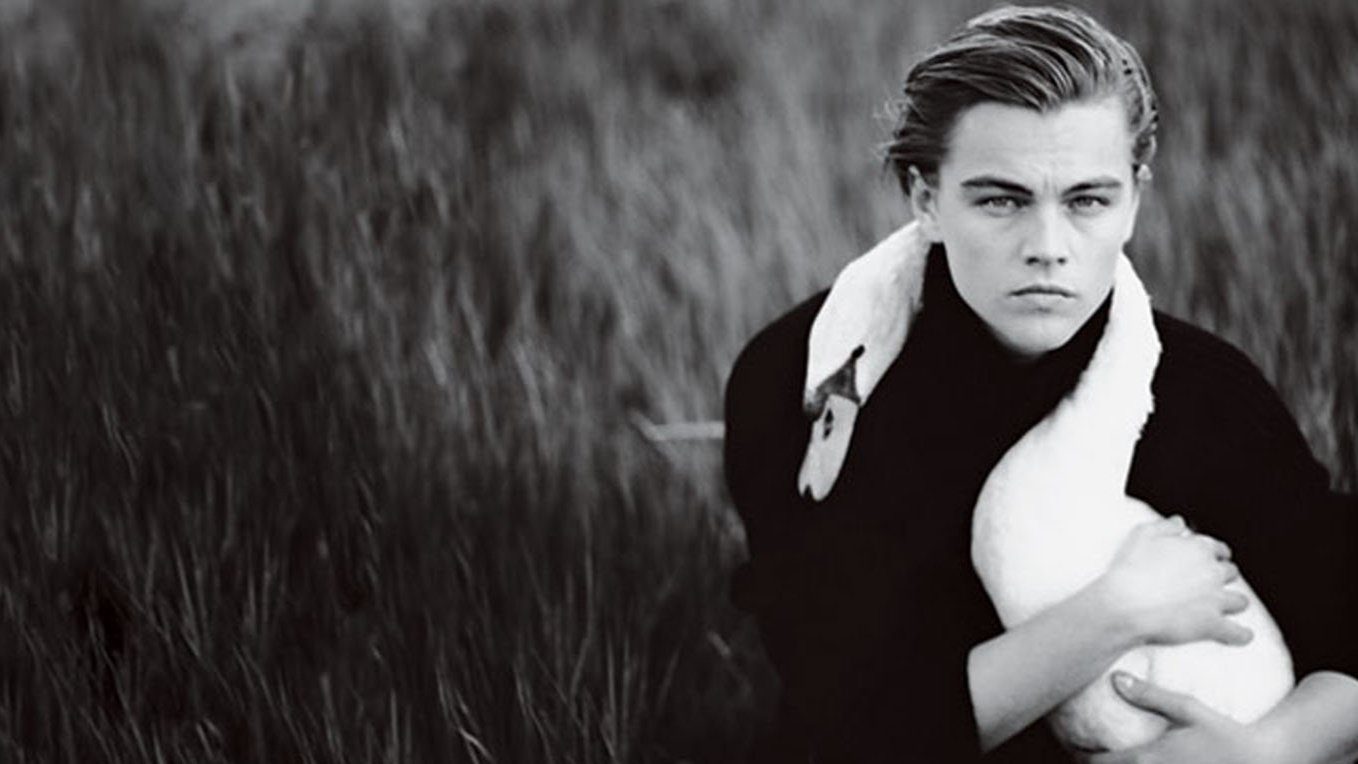















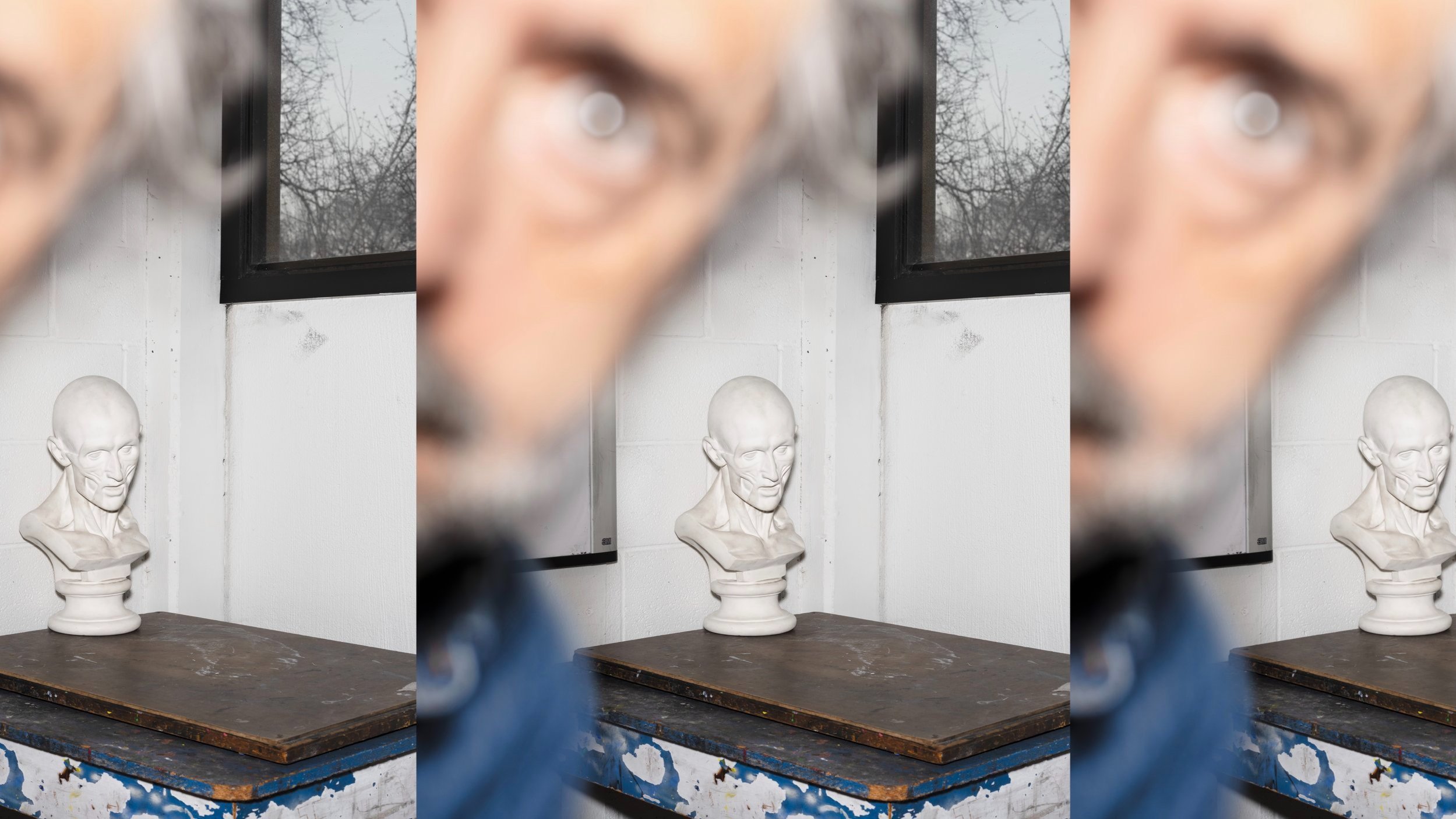






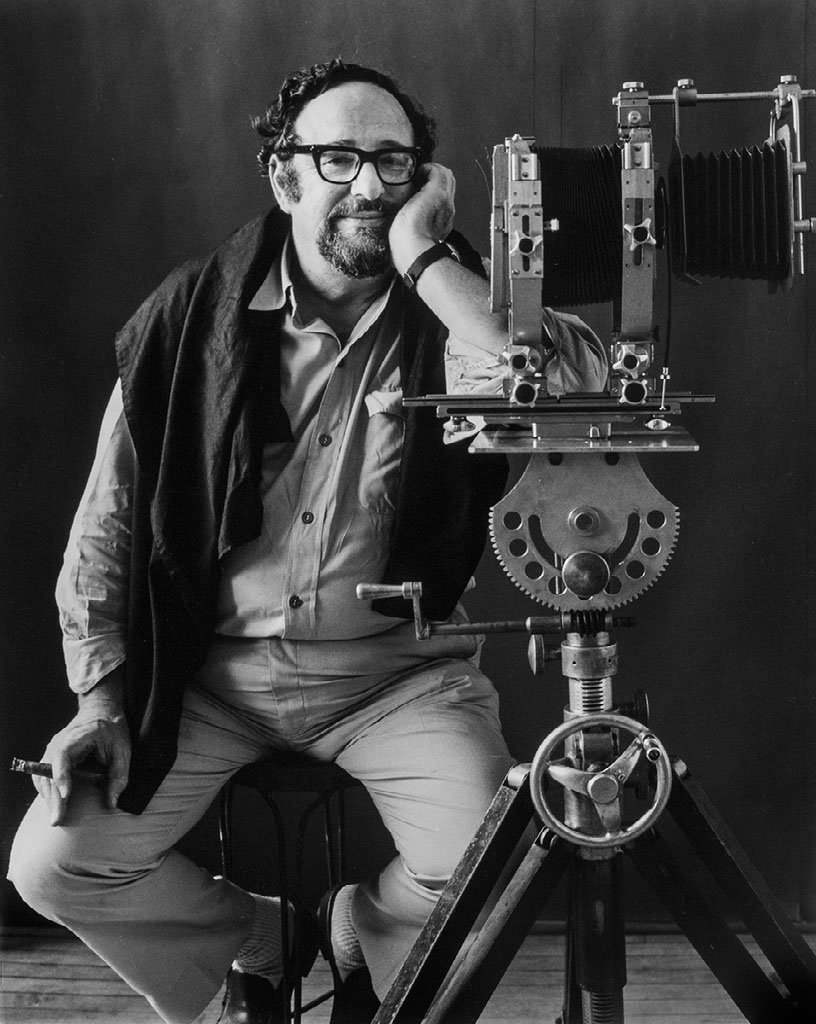






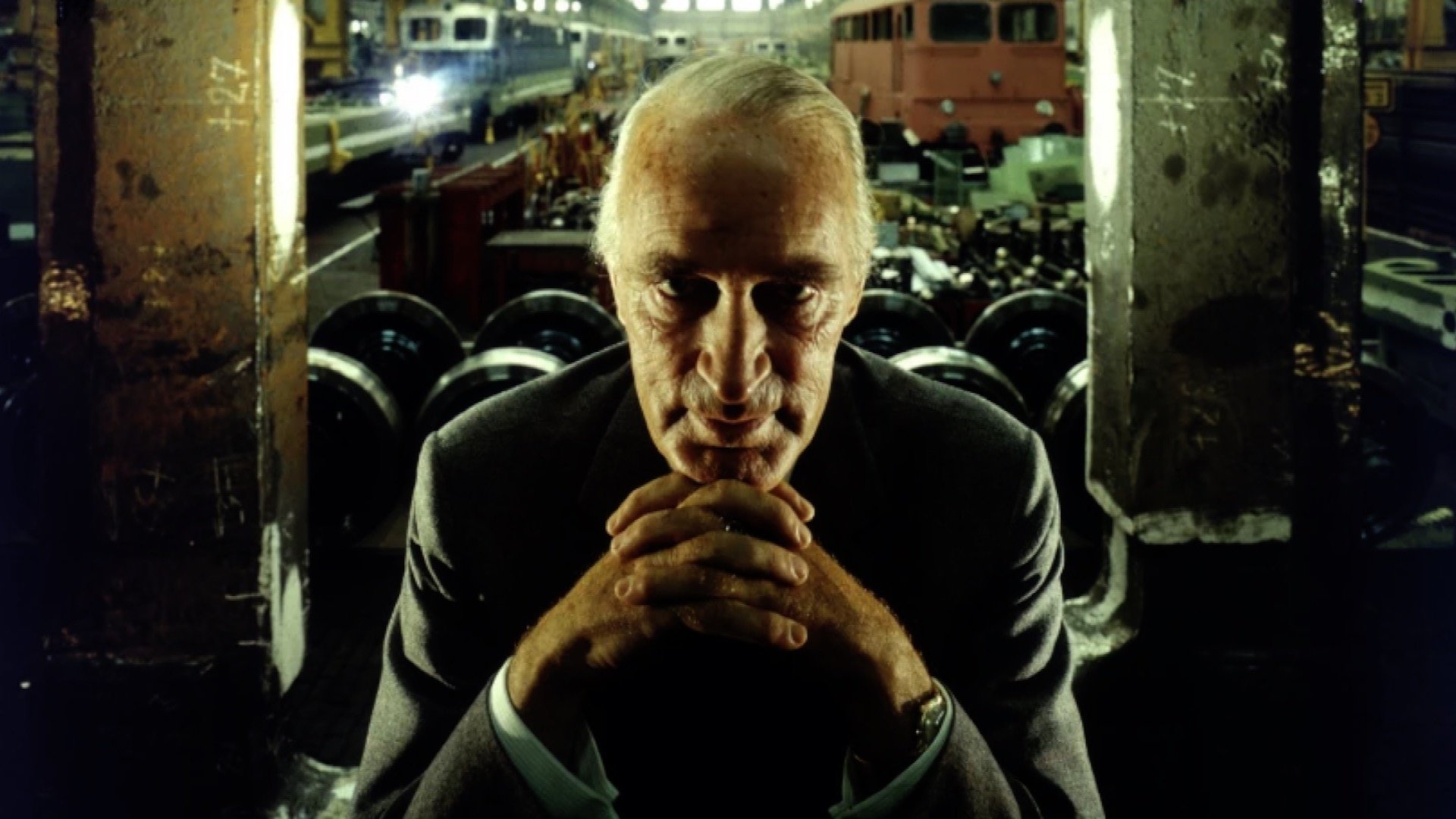




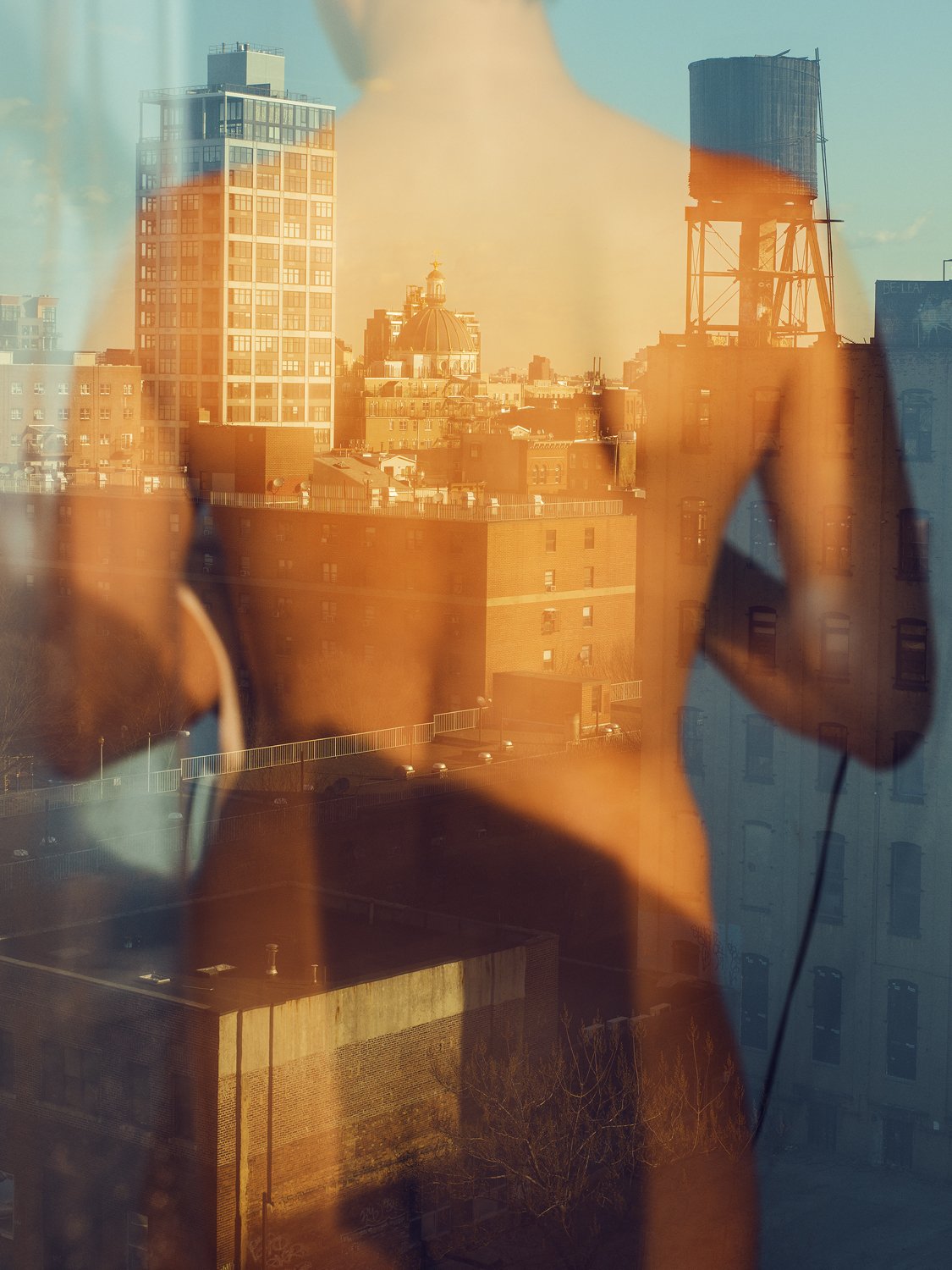





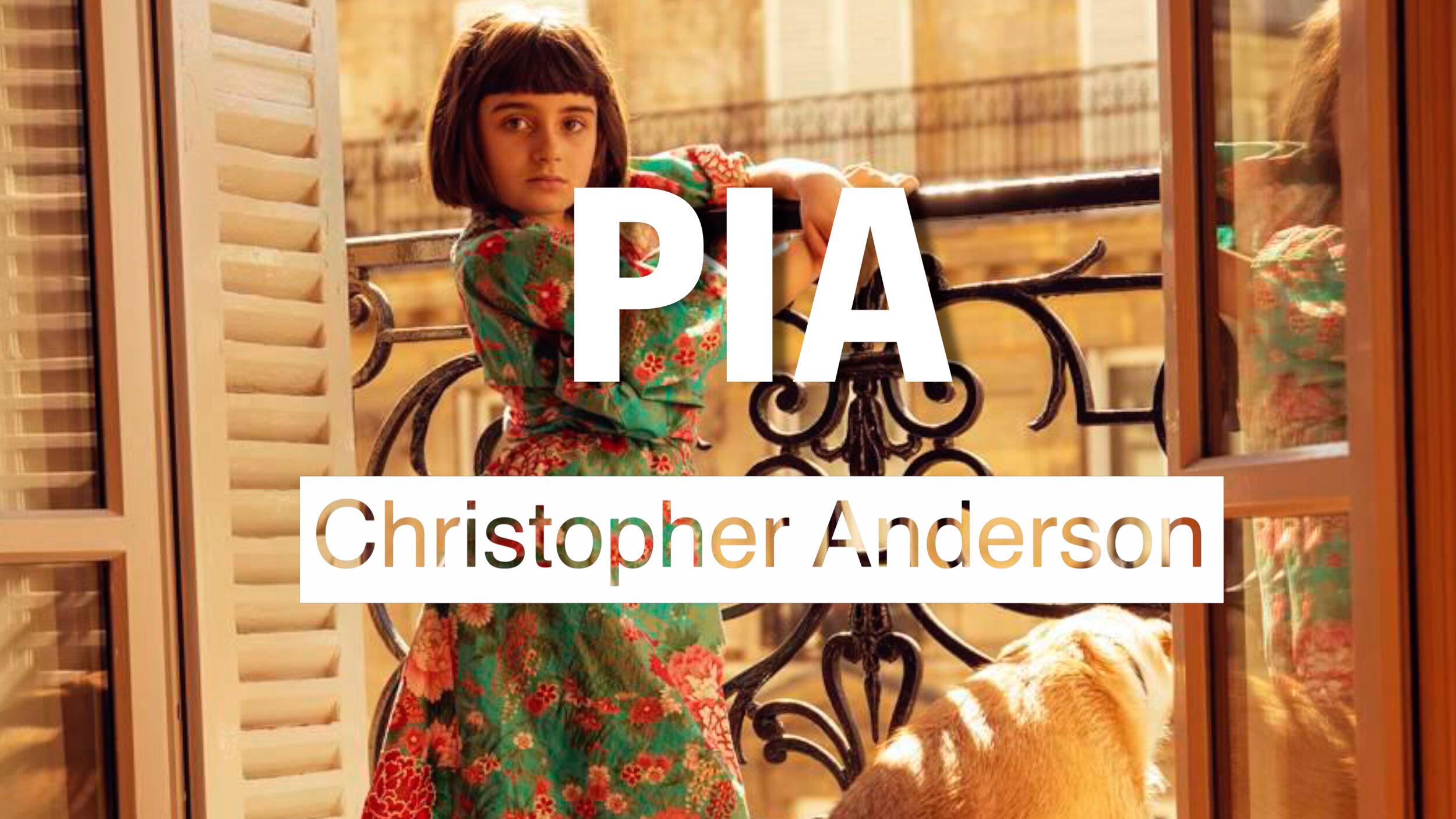










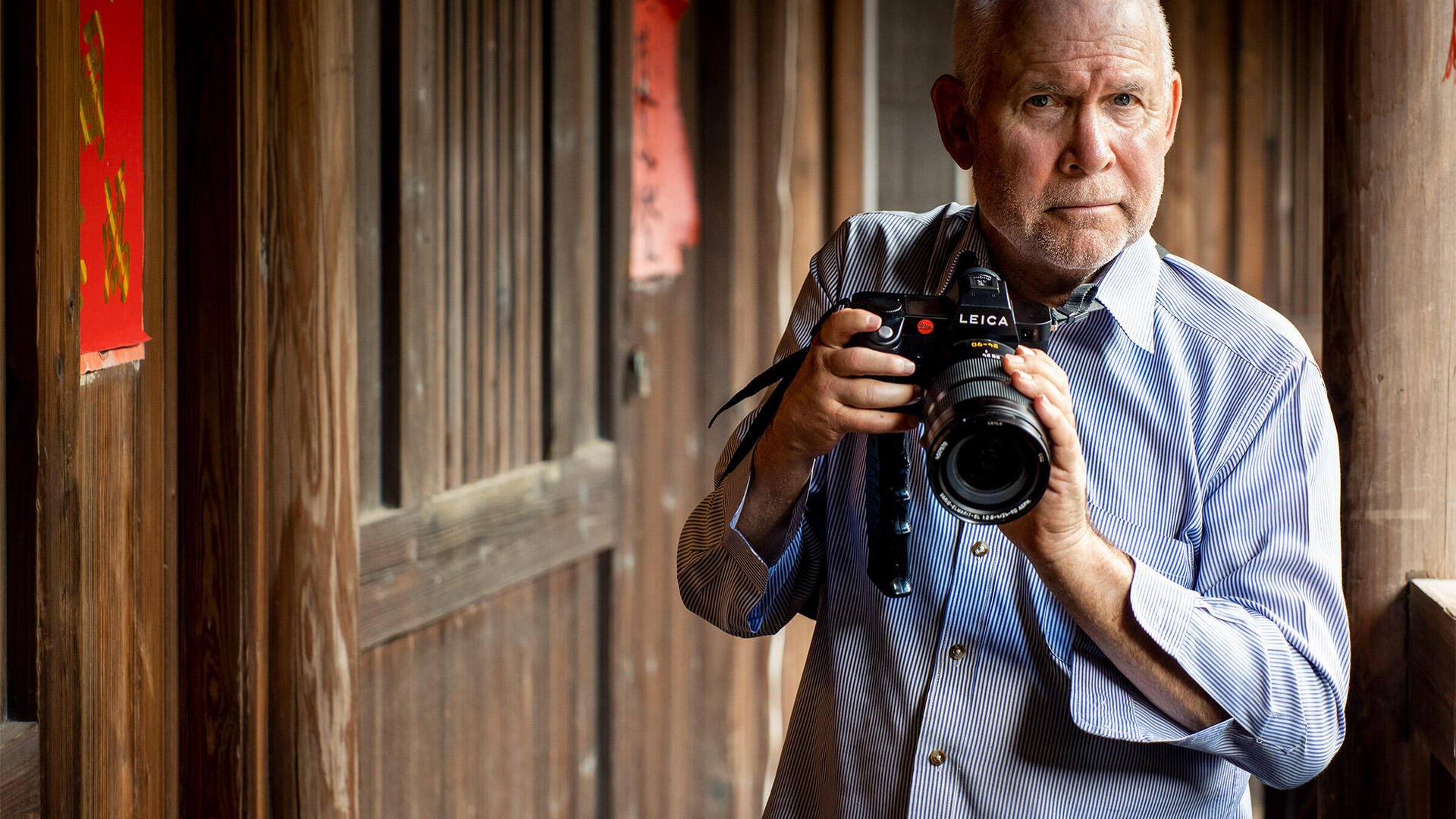





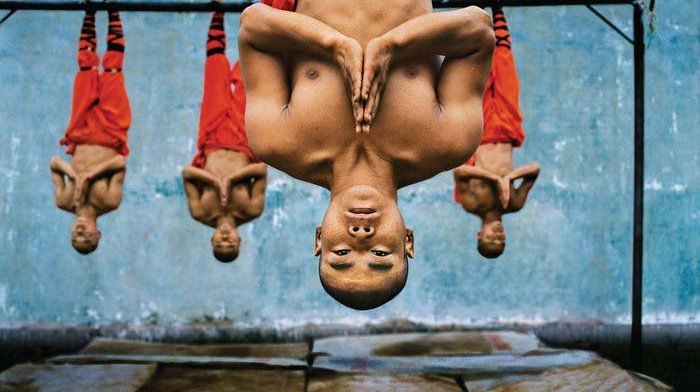







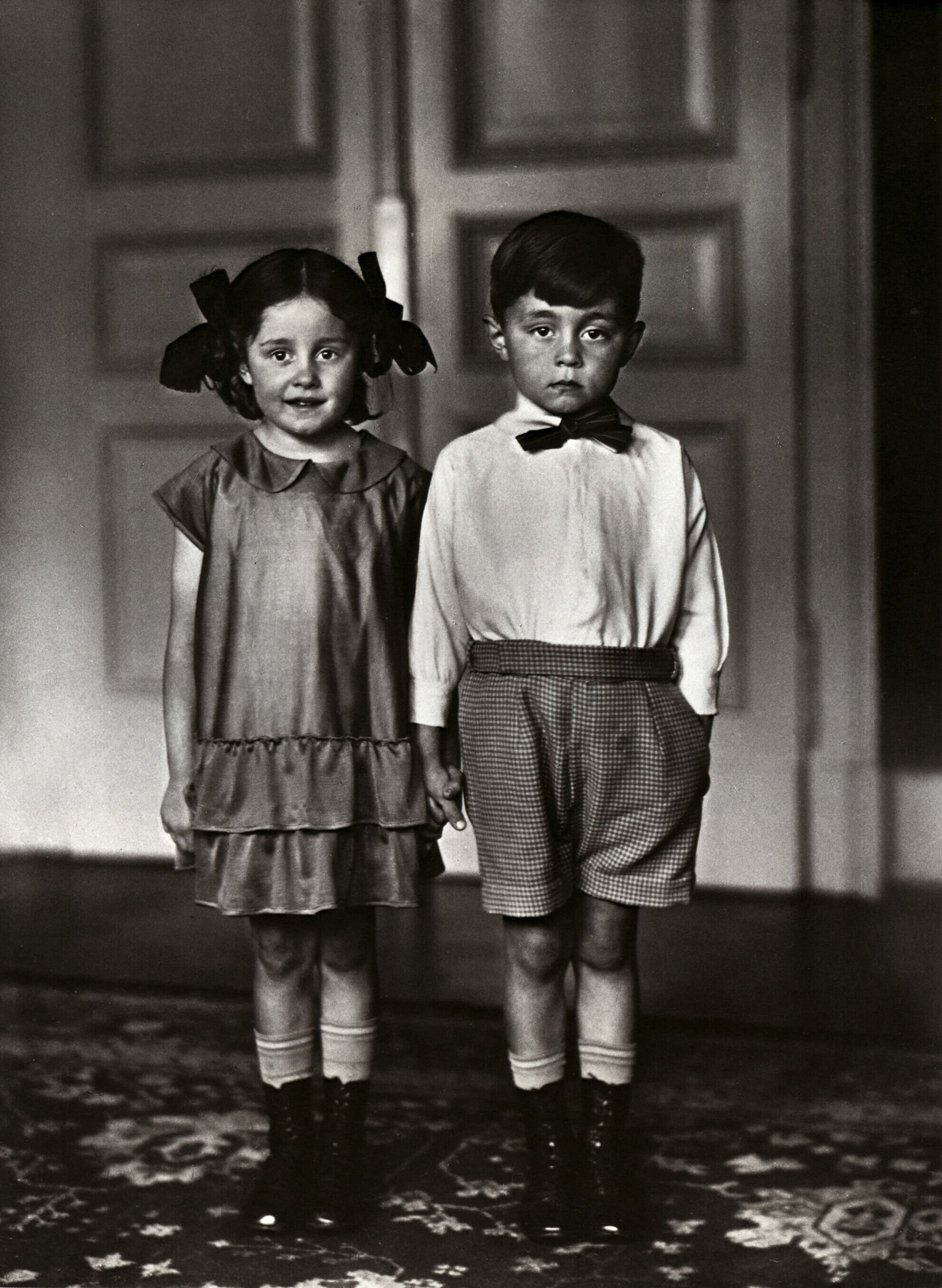





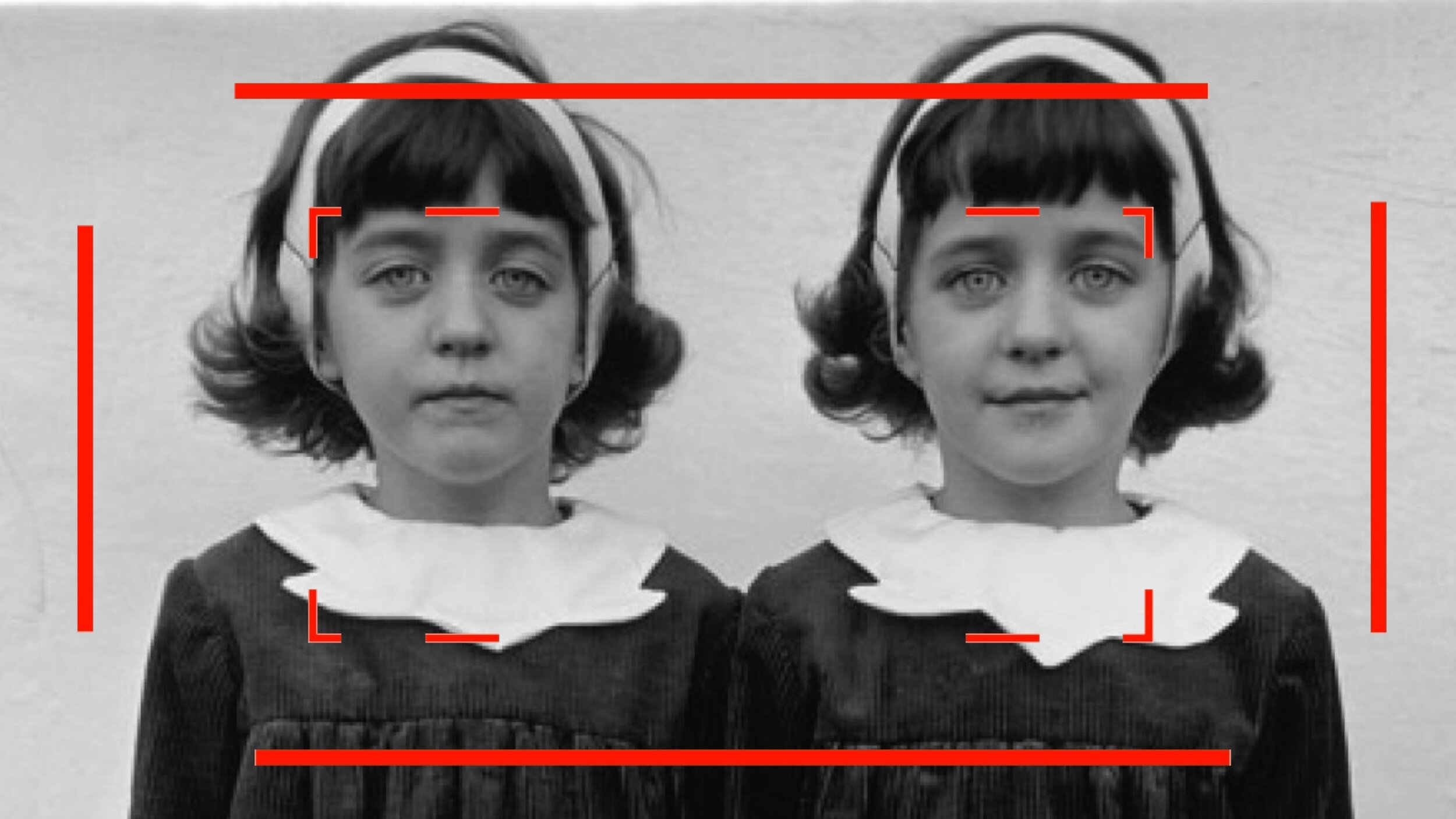

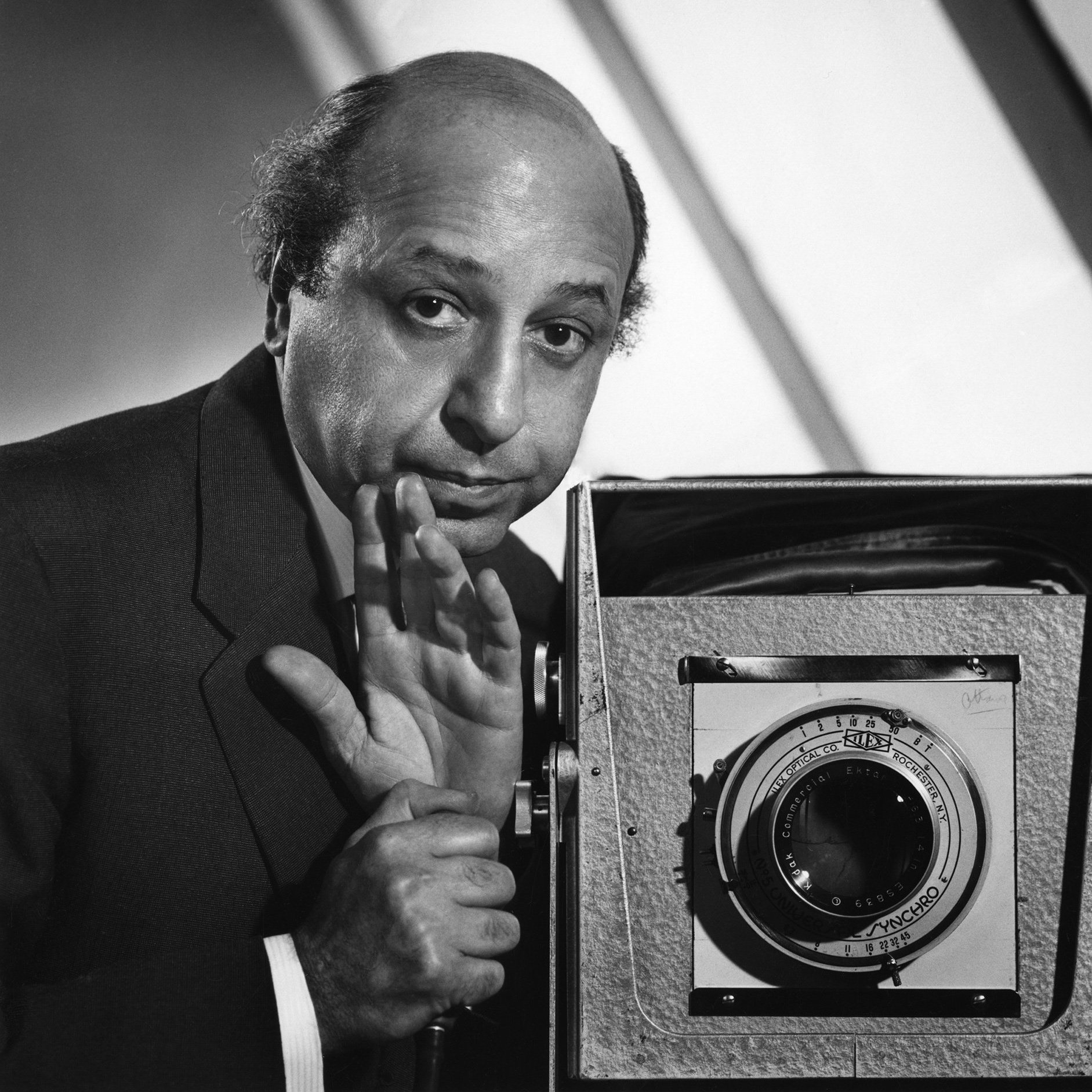







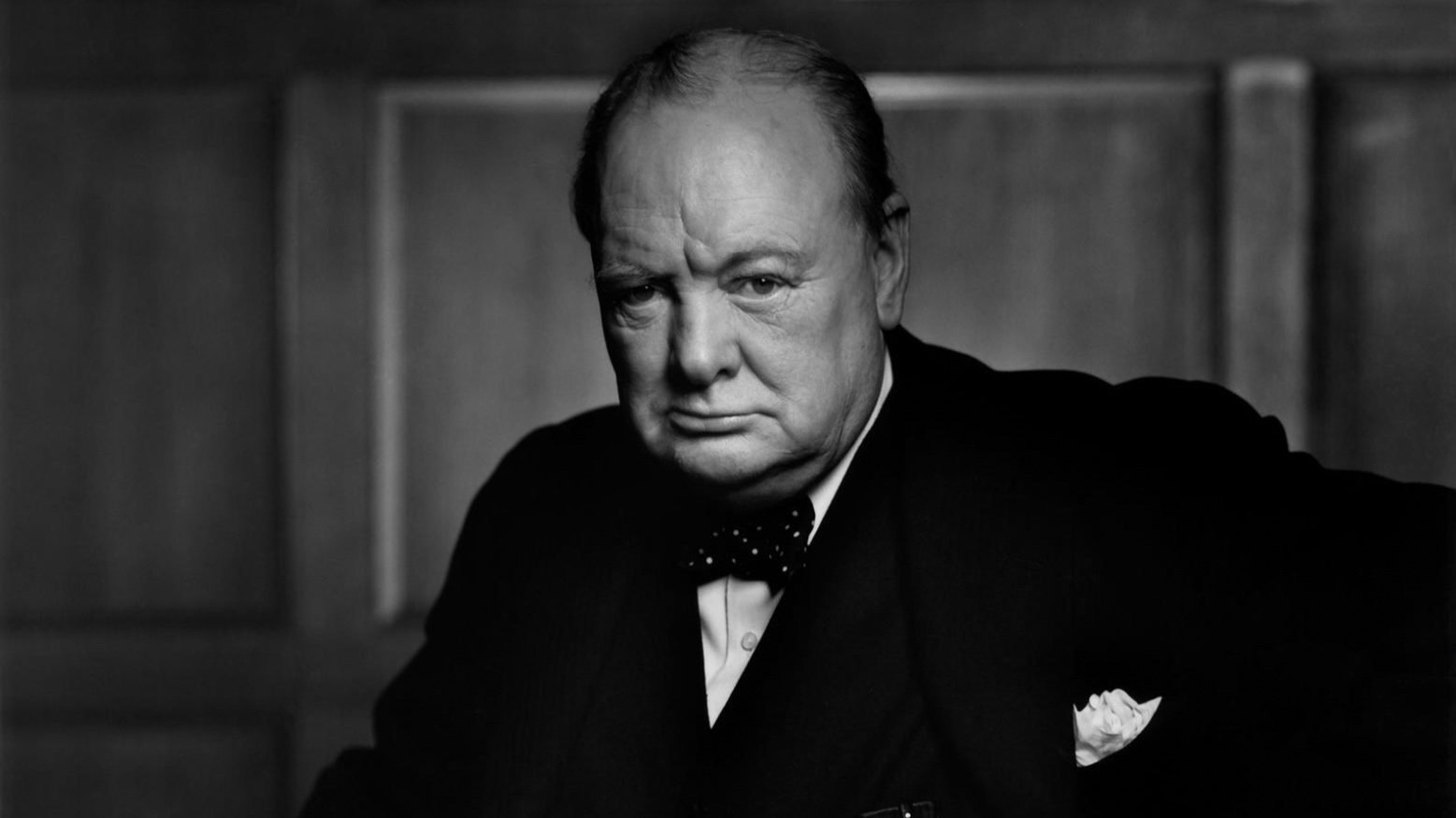









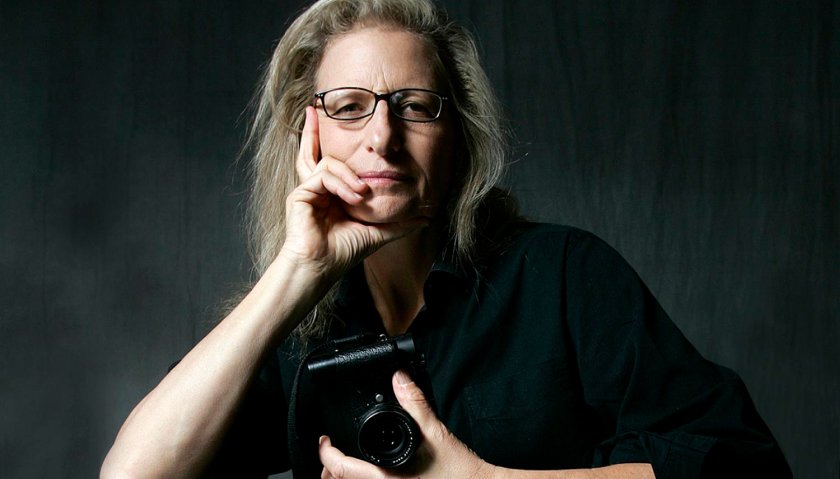
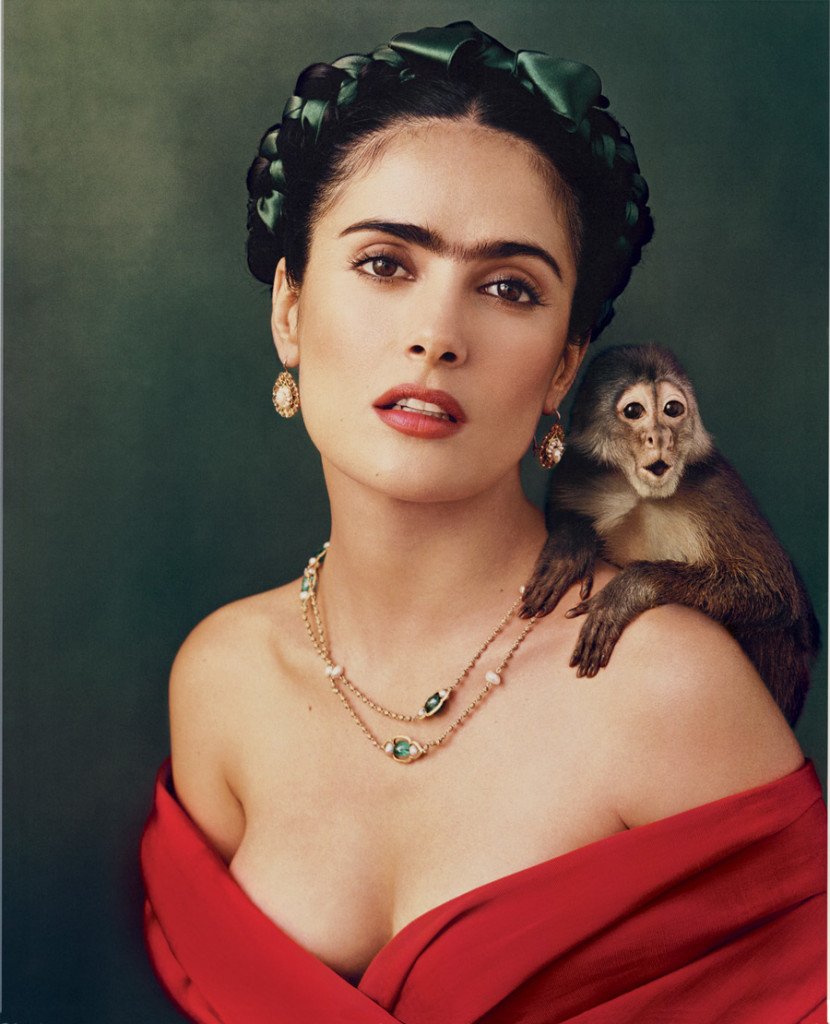

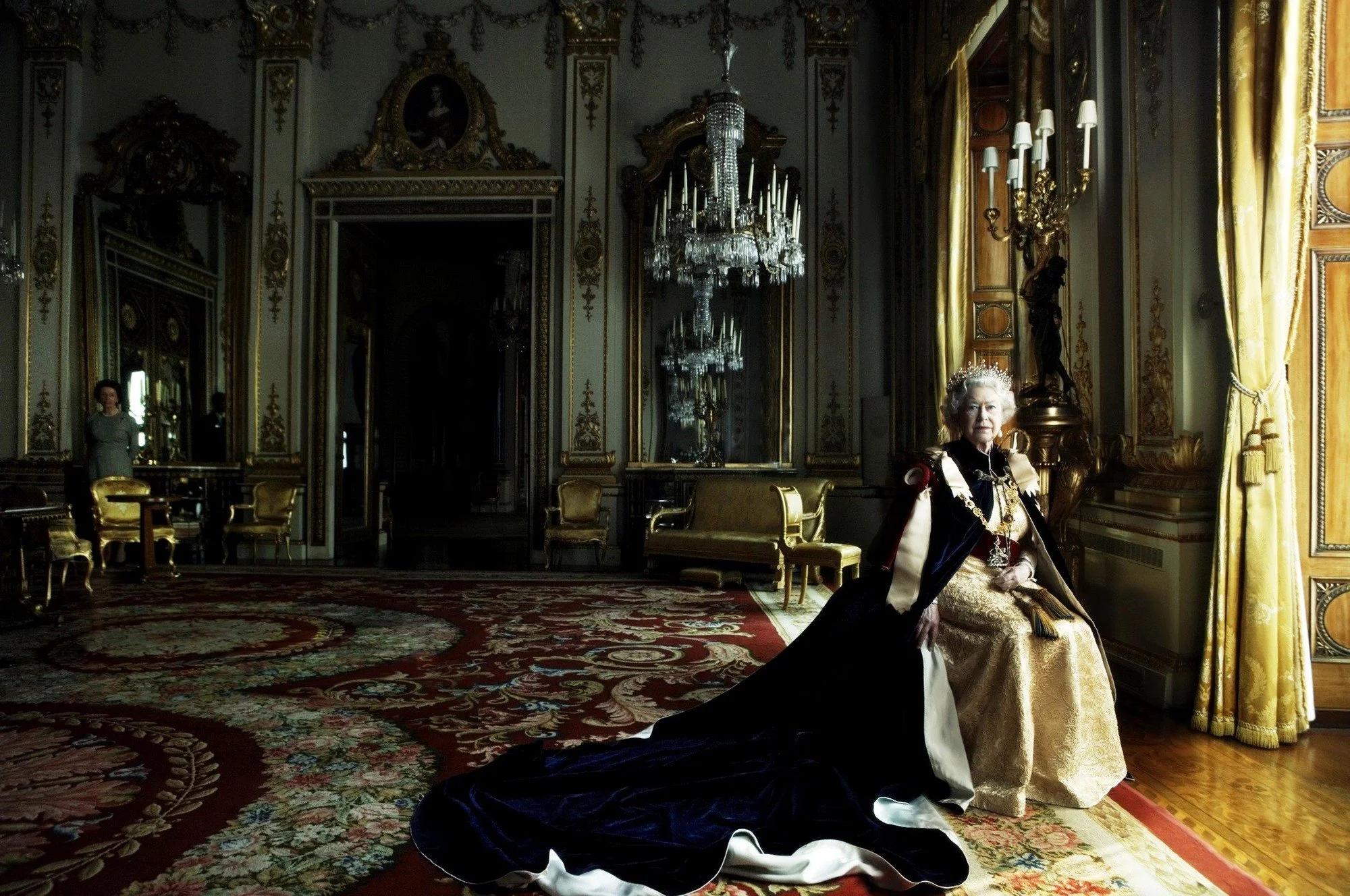











Even the most accomplished artists feel like beginners sometimes. Drawing from years of experience and his visits to art programs across the United States, Soth offers a rare glimpse into the struggles and joys of making art at any stage of life. Photography Book Spotlight